This post may contain affiliate links. I receive a small commission at no cost to you when you make a purchase using my link.
New Zealand is a remote island country known for its sharp Alpine peaks, volcanic formations, and Hobbiton valley. Because it is so remote (unless you are traveling from Australia), planning a trip here requires thorough research, especially if you are doing a packed 2 weeks in New Zealand itinerary.
From the snow-capped mountains of the South Island to the white sand beaches of the North Island, New Zealand has an abundance of stunning natural attractions to explore. Whether you’re looking to explore the country’s many stunning national parks or take a dip in its crystal-clear lakes and rivers, there’s something for everyone to enjoy.
Our New Zealand road trip in a campervan took place in November 2019 during springtime and we managed to travel through both the North and South islands in 14 days.
2 Weeks in New Zealand Itinerary Day by Day
Our 2 weeks in New Zealand road trip started in Auckland – went though Rotorua geothermal area region – Lake Taupo – Wellington – on to West Coast on South Island – through Wanaka – Lake Tekapo – ending with Christchurch on East Coast of South Island.
New Zealand road trip itinerary map
Day 1. Arrival to Auckland and Hobbiton
Day 1 of your campervan journey on 2 weeks in New Zealand itinerary begins with your arrival in Auckland, the largest city in the country. Day one will be hectic since you will have to go through customs, pick up the campervan, stock up the fridge with groceries, and figure out the first night stop. Be ready to lose around half of the day for that.
After picking up your campervan, you can explore the city and its many attractions, such as the Sky Tower, the Harbour Bridge, and the Auckland Art Gallery. In the afternoon, you can make your way to Hobbiton, the movie set of the Lord of the Rings and The Hobbit films. Here, you can take a guided tour of the set, see the hobbit holes, and learn about the making of the films. After the tour, you can spend the night in your campervan, parked at a nearby camping ground. This is a great way to start your New Zealand adventure, immersing yourself in the culture of both the city and the countryside.
Day 2: North Island – Geothermal Rotorua
Day 2 of your road trip in New Zealand takes you to the geothermal wonders of Rotorua. You can start the day by visiting Wai-o-tapu Thermal Wonderland, a geothermal park known for its colorful pools and bubbling mud pools. You can walk around the park and see the Lady Knox Geyser, the Champagne Pool, and the Artist’s Palette. After that, you can head to Waimangu Volcanic Valley, the world’s youngest geothermal system. Here, you can hike around the valley, see the boiling mud pools, and learn about volcanic activity.
Rotorua is not only known for its geothermal activities, but also for its cultural experiences providing insights into the life of Māori people. Once you are here and have spare time, take a tour to Tamaki Māori Village for an unforgettable experience of Māori rituals.
We visited two geothermal parks in the Rotorua area: Wai-o-tapu Thermal Wonderland and Waimangu Volcanic Valley. But if you have more time on your hands, be sure to also check out Orakei Korako Geothermal Park & Cave for gushing geysers, hot springs, and bubbling mud pools.
Wai-o-Tapu Thermal Wonderland
Make sure to arrive early. It gets pretty busy very fast. We arrived by 08:30 for the opening time and there were already busses with people queueing. The entire walk of three loops took us 1,5 hours to complete. I was truly astonished to see all the geological formations the park has to offer.
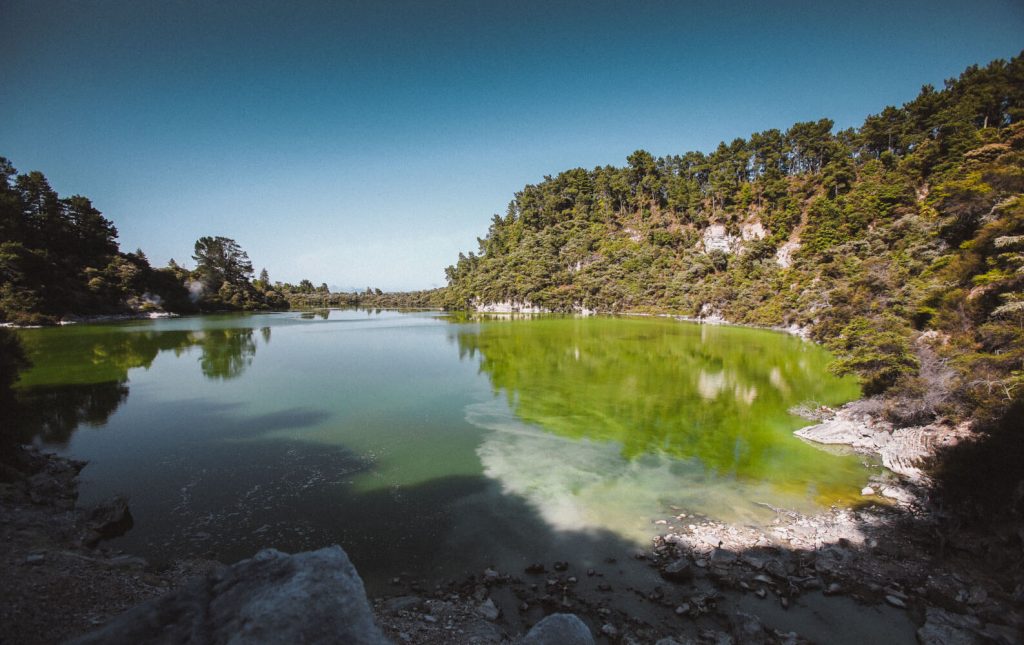
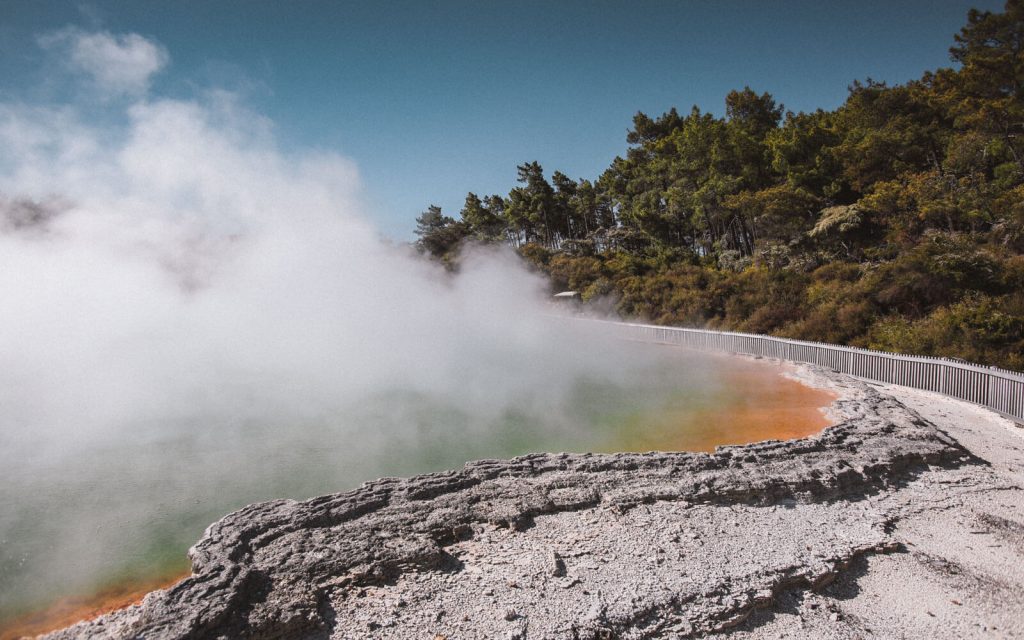
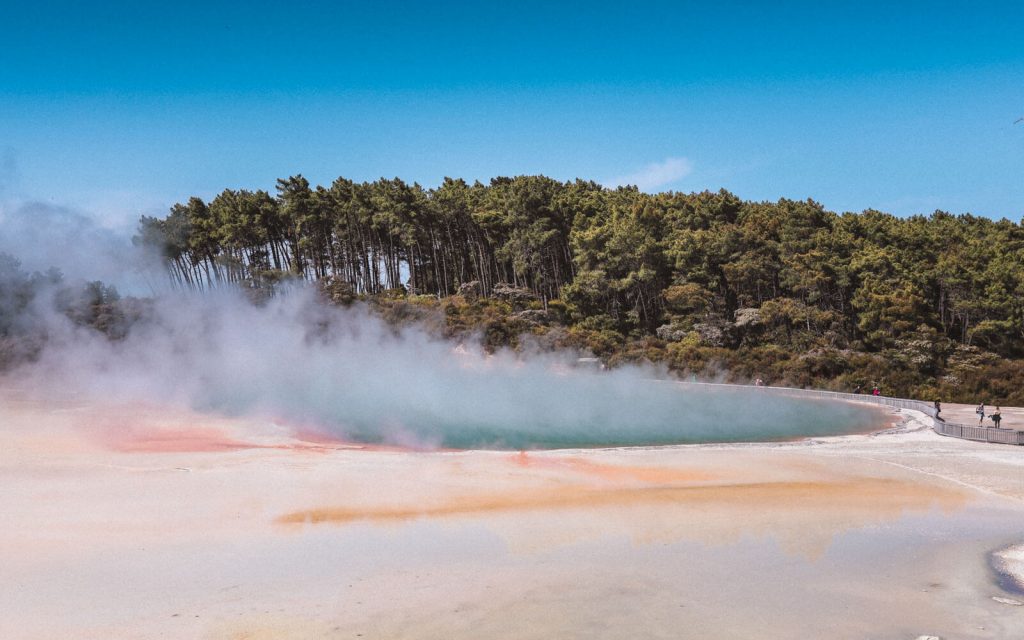
If you have limited time or resources and you need to go with one park only, I would choose the Wai-o-Tapu. It has a bigger variety of geothermal structures to show and it is easier to walk through.
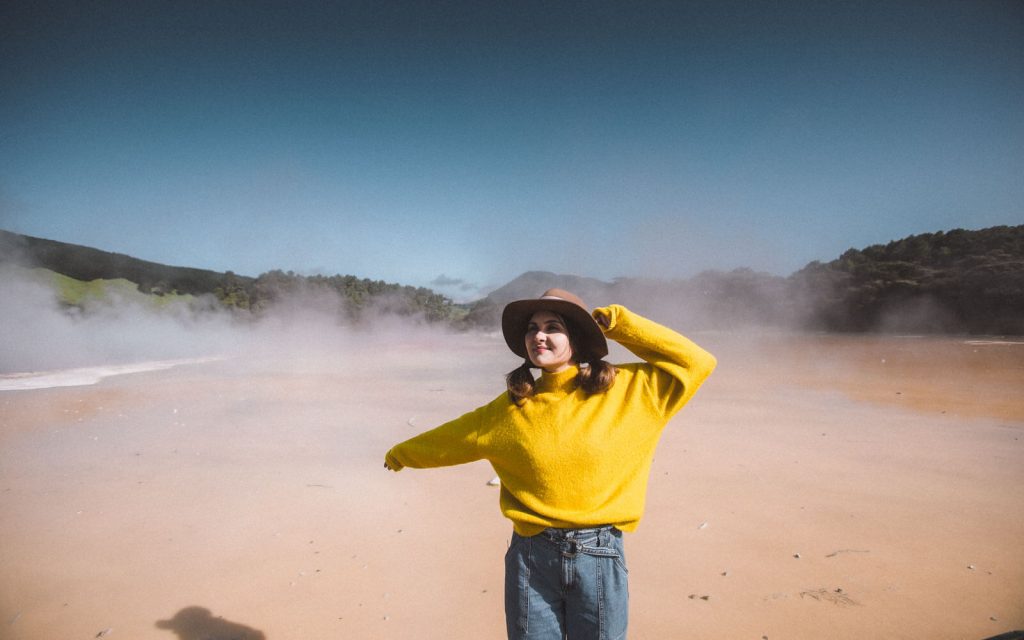
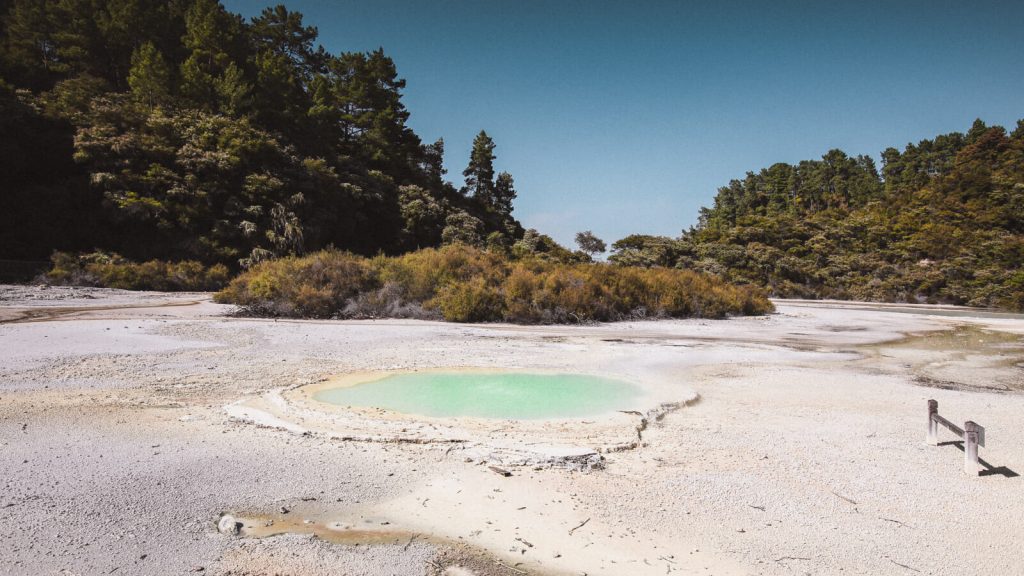
There is a geyser that you can experience in its active state around 10:15-10:30. There are seats gathering crowds much like in the ancient amphitheater. If you are curious about how is it possible that a geyser erupts daily exactly at 10:15 am, do not be puzzled. The park ranger will come and induce the geyser eruption with a few chemicals for everyone to witness. This of course diminishes the charm but allows everyone the possibility to see the geyser in action.
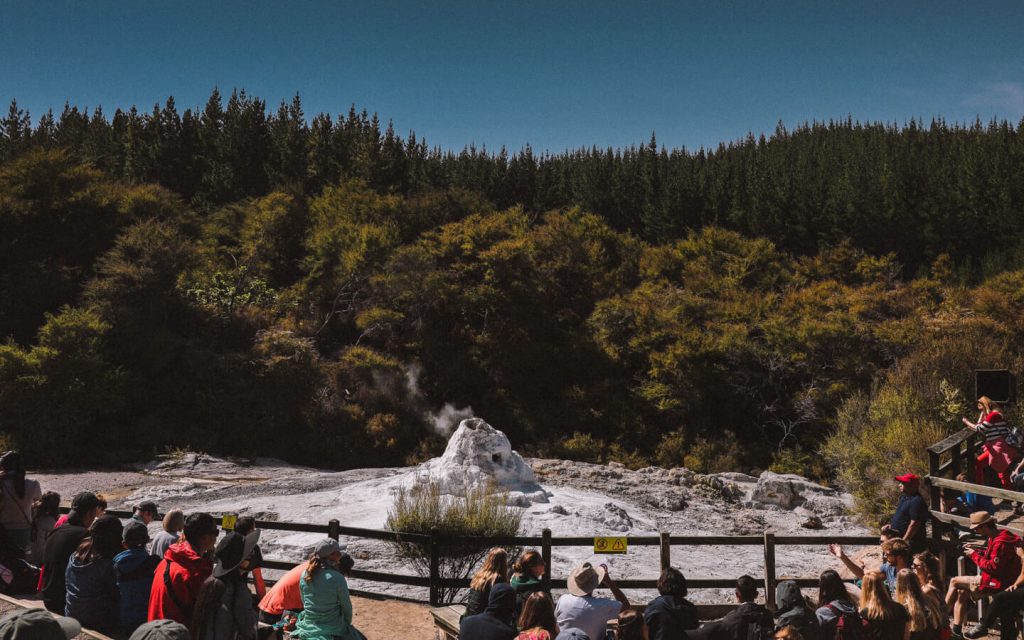
Waimangu Volcanic Valley
The lady at the entrance said it would take about 2 hours to complete the walk. We finished a bit sooner, but there were certainly some gaze-grippers that made us pause in amazement. The highlight of this hike was the Inferno Crator of course. Make sure to use your time in a good fashion so that you come just in time for the bus that can take you back to the Visitor Center. It goes only once an hour.
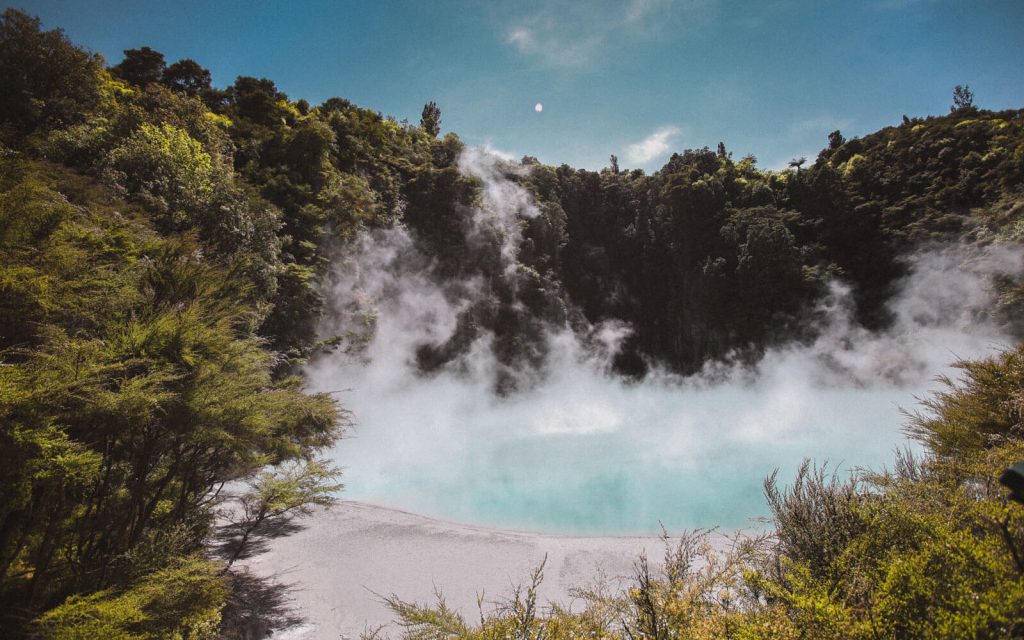
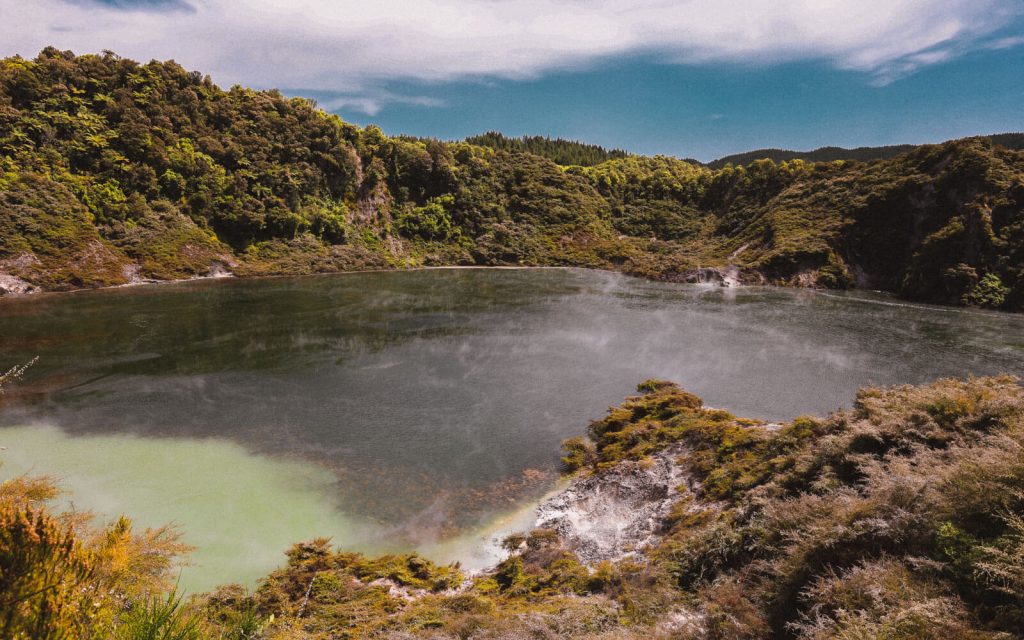
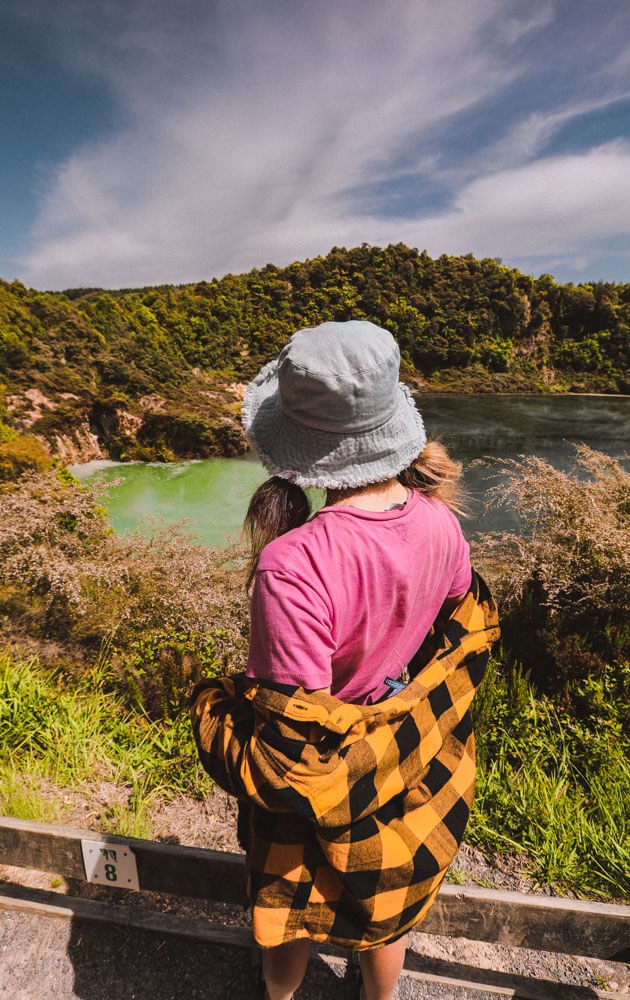
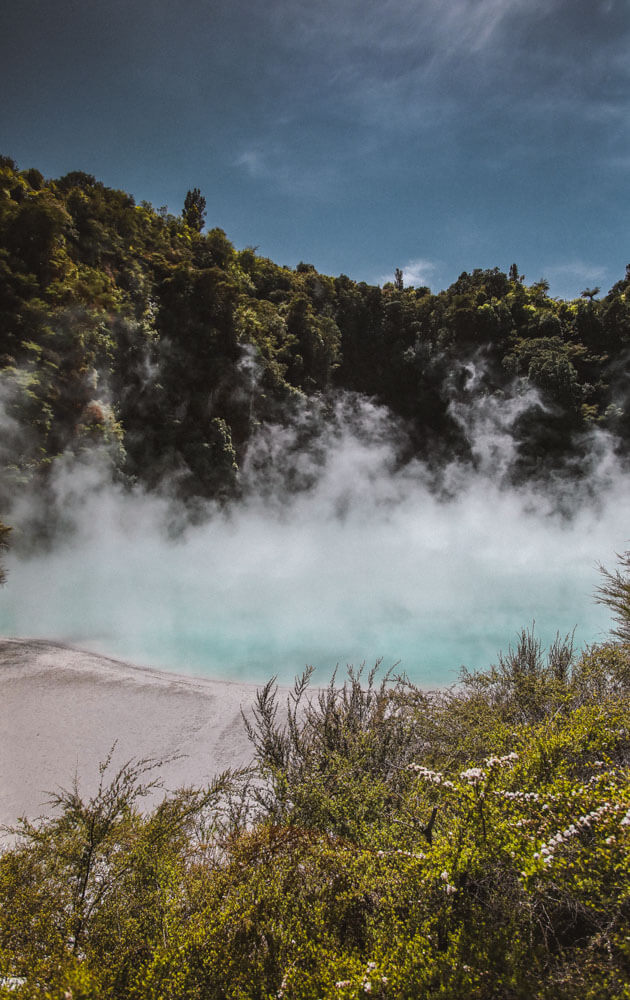
The parks are a funny representation of hell on earth.
After a day of exploring the geothermal wonders of Rotorua, you can spend the night in your campervan, parked at a nearby camping ground.
We decided to stay overnight at Lake Taupo camping, which was a great ending to the day. The Five Mike Parh campsite might not have the best facilities but it certainly has the best views!
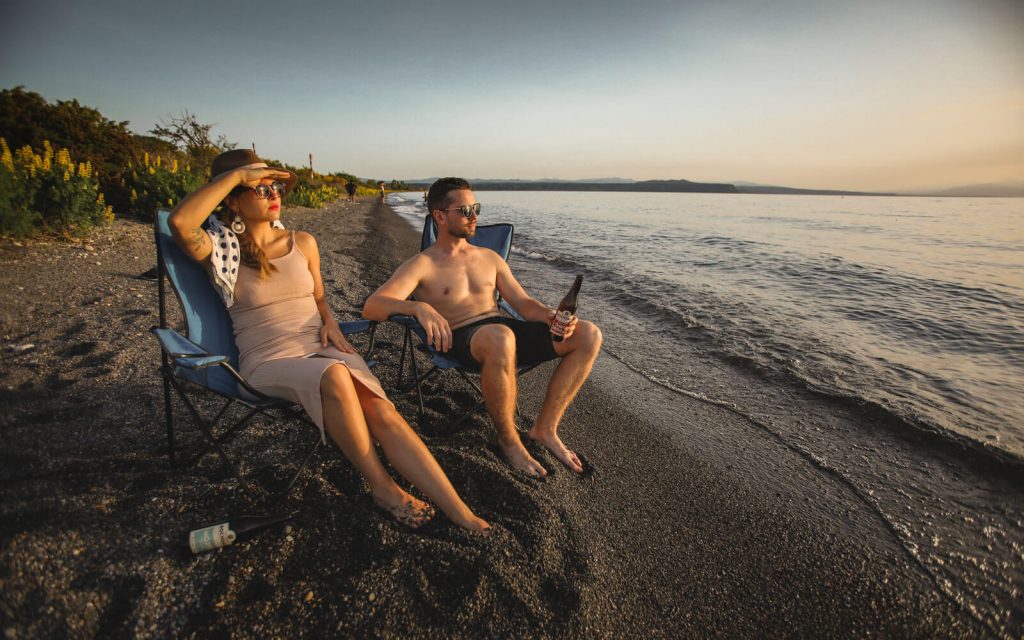
There is only one vault toilet with no water or trash bins, so it is suitable for self-contained vehicles only. But once you settle in, enjoy the view towards the snowy mountain peak across the lake covered with yellow lupins.
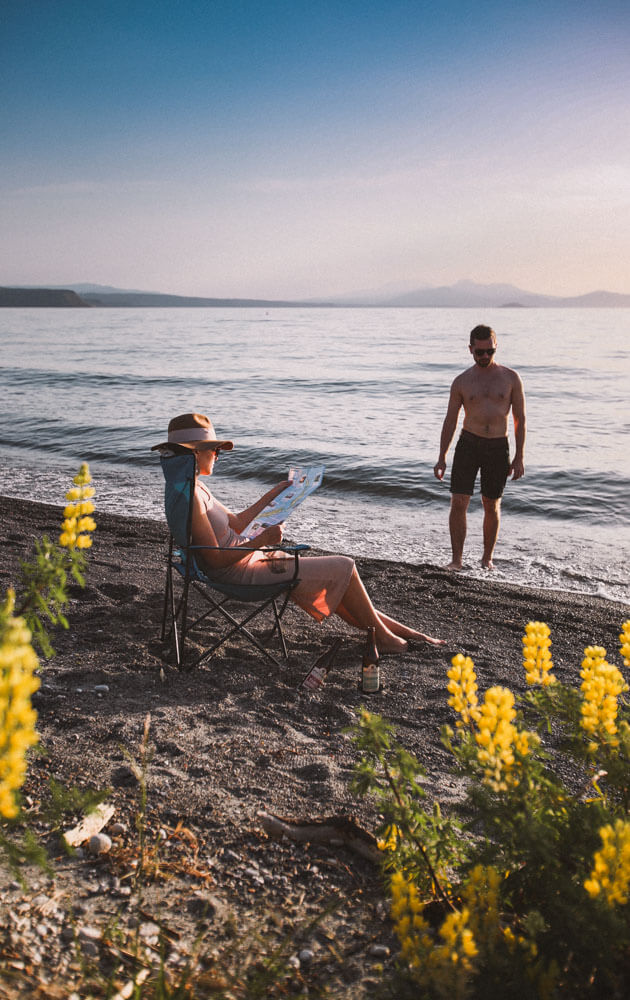
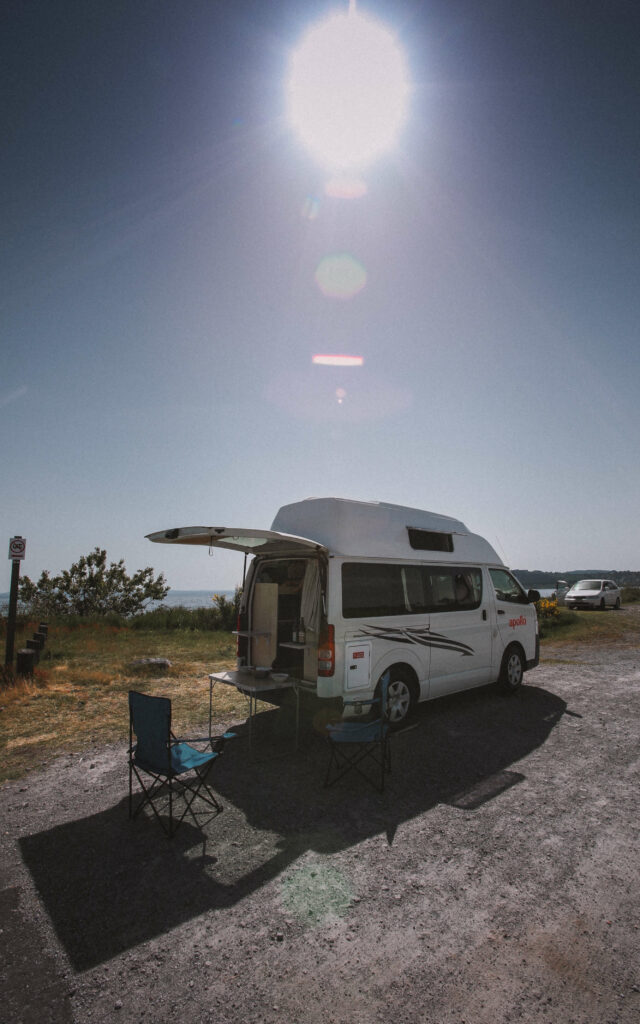
Day 3: Scenic Drive through Wellington to South Island
Day 3 of this two-week New Zealand itinerary will be all about driving through the Wellington region to reach the South Island.
If you have enough time, you can make a stop to explore Wellington, the capital city of New Zealand, where you can visit the city’s many attractions such as the Te Papa Museum, Parliament Buildings, and the Botanic Gardens.
We drove from Lake Taupo, took the ferry from Wellington to Picton, and drove a little more through beautiful Marlborough wine fields.
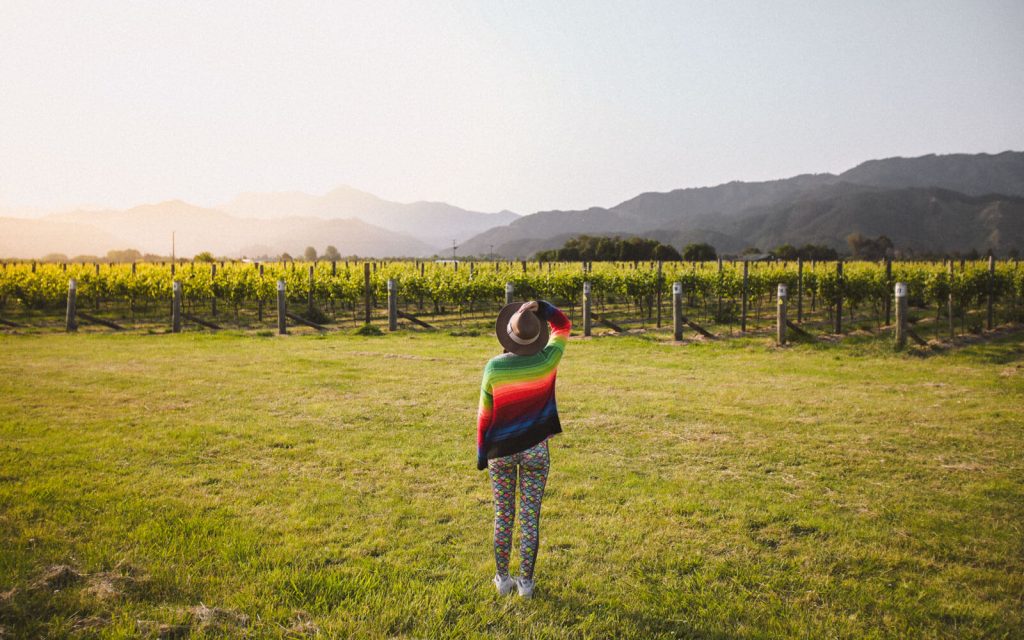
The drive through Marlborough will take you through picturesque countryside, with stunning views of the vineyards and the Pacific Ocean. Along the way, you can stop at some of the local wineries, where you can taste the wines and learn about the wine-making process. Marlborough is known for its world-renowned Sauvignon Blanc wines, you will have the opportunity to try some of the best wines in the region.
Once you reach Lake Rotoiti, you can take a leisurely stroll around the lake, and enjoy the tranquility of the surrounding nature. For the overnight stay, you can pick Kerr Bay Campground situated in St. Arnaud right on the lake. If you are lucky, you might spot quite a number of black eels who enjoy hiding under the lake bridge.
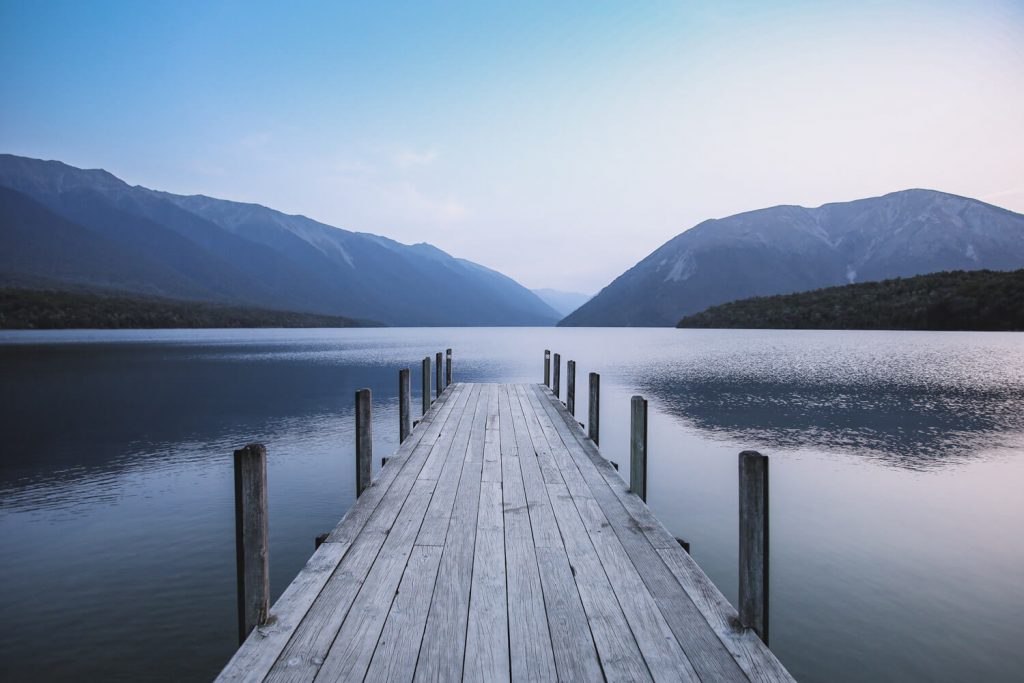
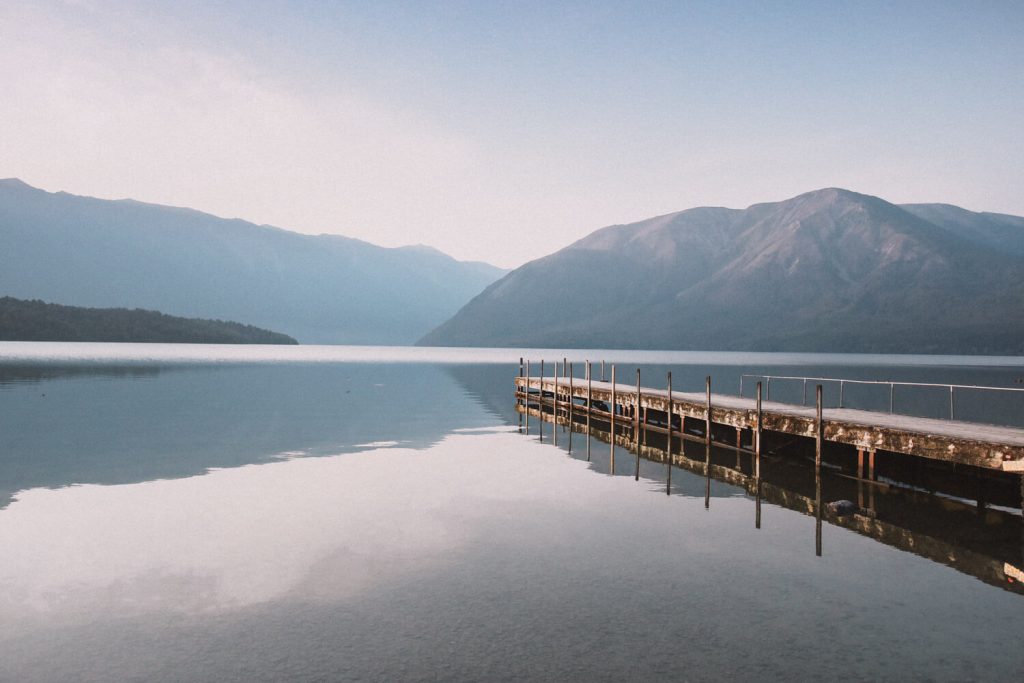
Day 4: Pancake Rocks and West Coast
On the way to the famous Pancake Rocks, we make a stop in a little ghost town Lyell, which is practically non-existent anymore. Lyell is a historic gold mining town, known for its picturesque scenery, including the Buller River, and the Lyell Dam. You can take a walk around the town and learn about its history, and visit the Lyell Museum. It is a nice rest spot with a small suspension bridge leading the way for a bicycle hike track.
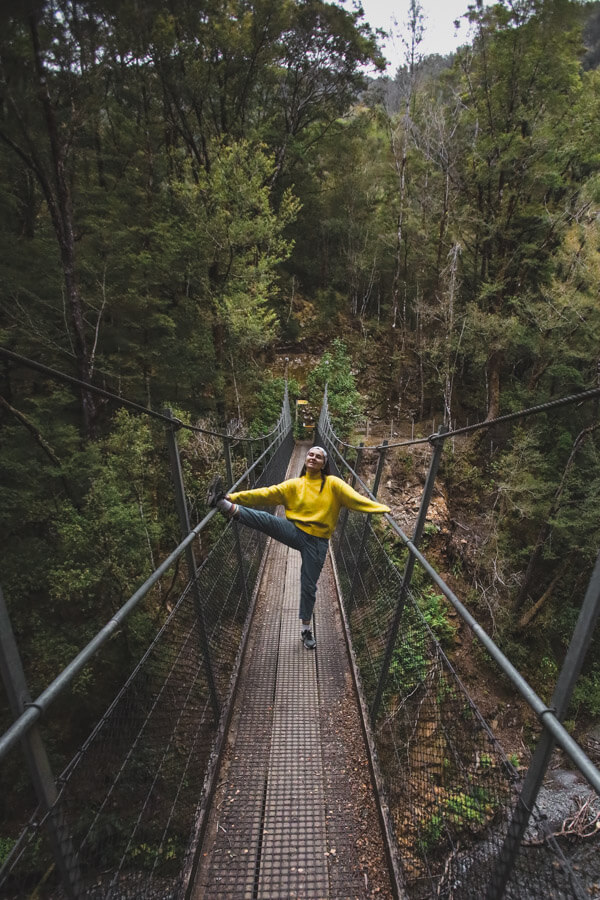
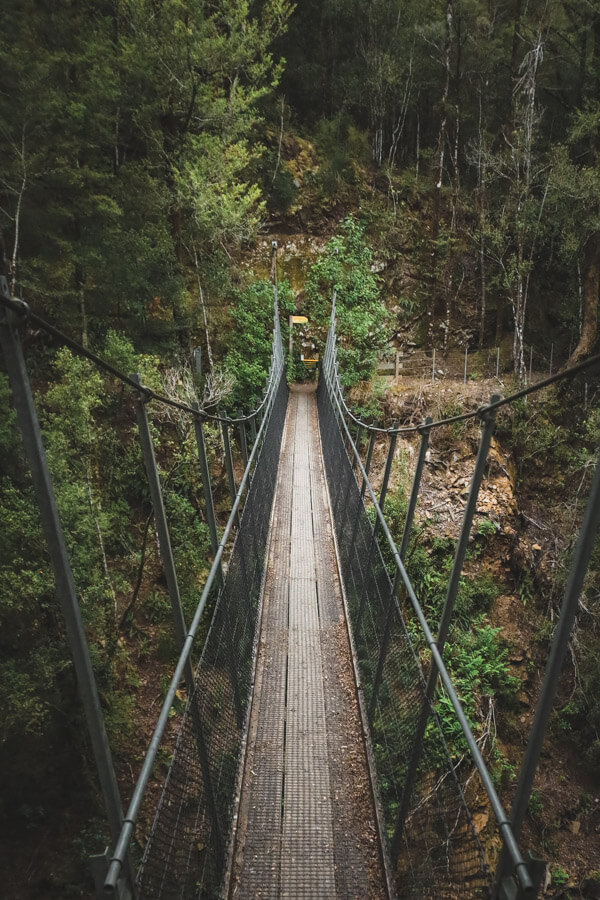
After that, you can drive to Punakaiki, home to the famous Pancake Rocks and Blowholes, a unique rock formation created by the erosive power of the sea. Here, you can take a walk along the coastal path to see the Pancake Rocks, the blowholes, and the limestone cliffs. You can also take a hike in the Paparoa National Park, where you can see the limestone landscape and the native flora and fauna.
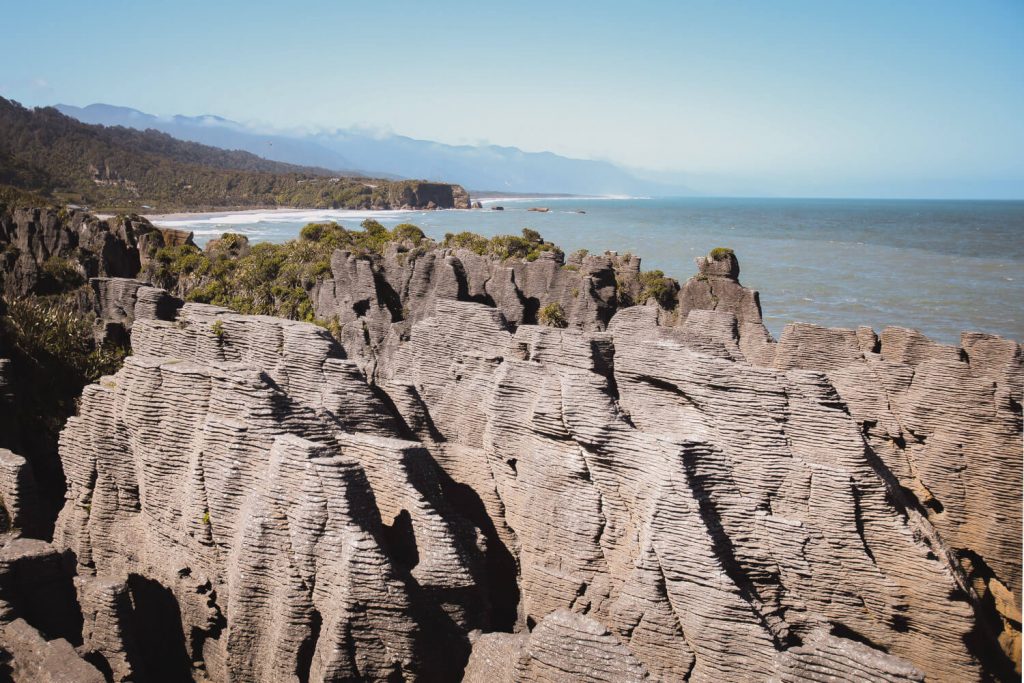
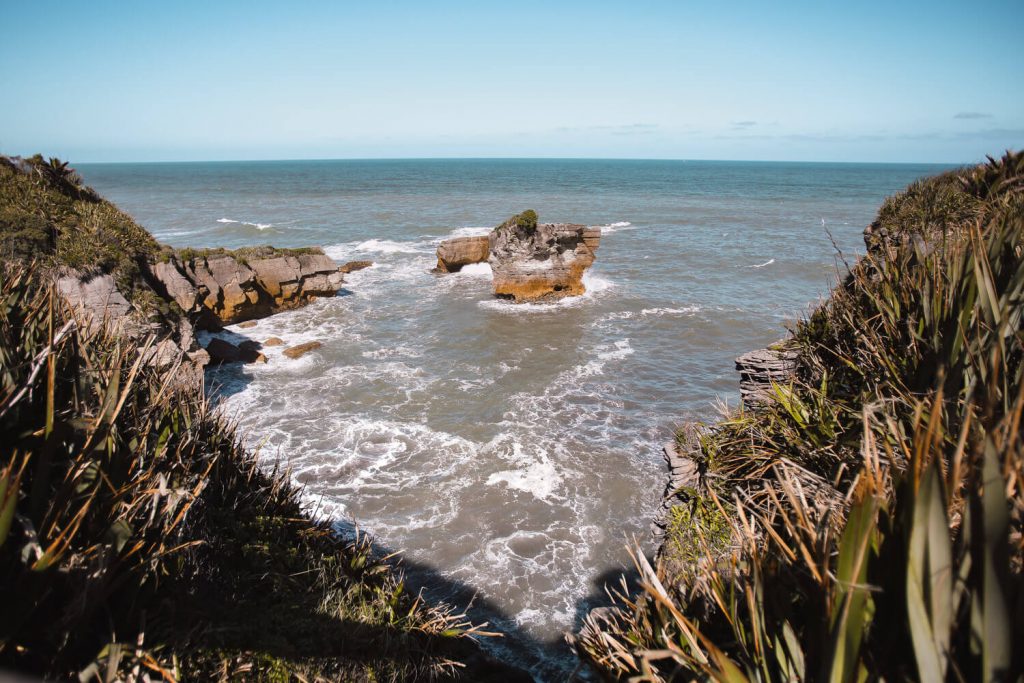
Punakaiki introduces us to the vastness of the West Coast ocean with constantly crashing waves. The rugged shore really is a dramatic place for some drama movies waiting to be shot.
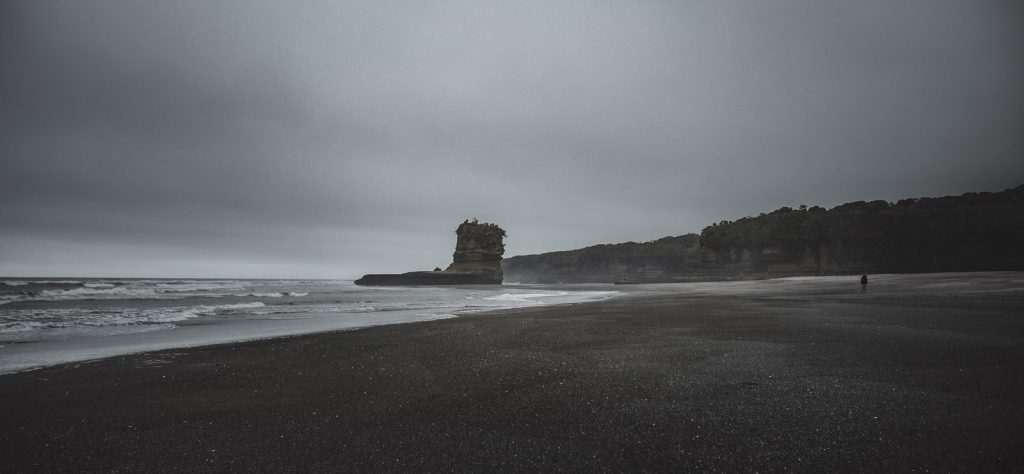
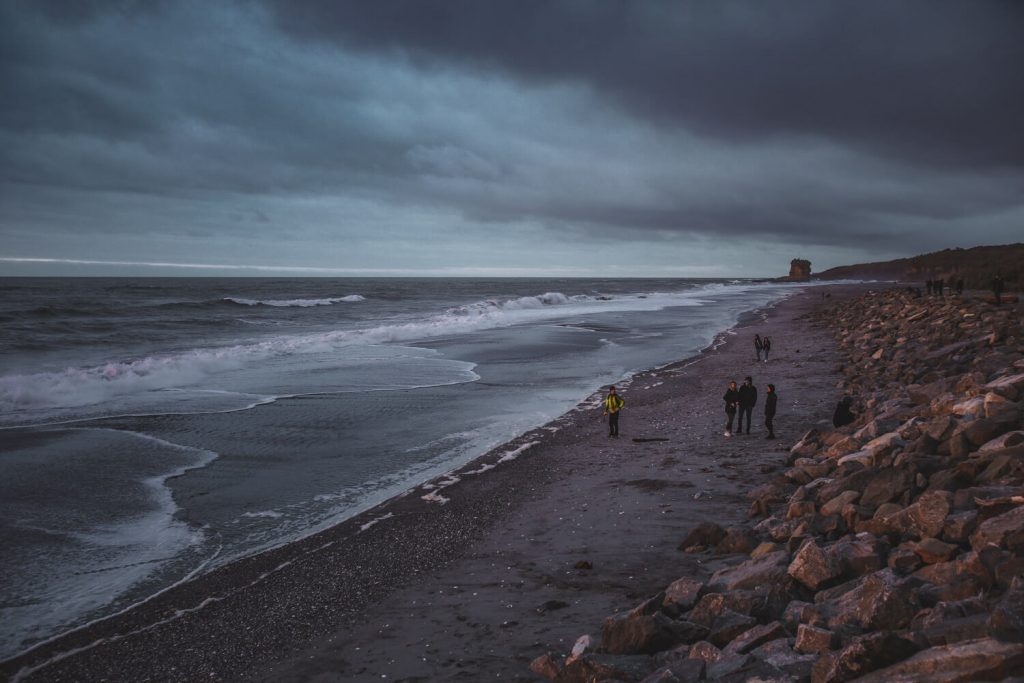
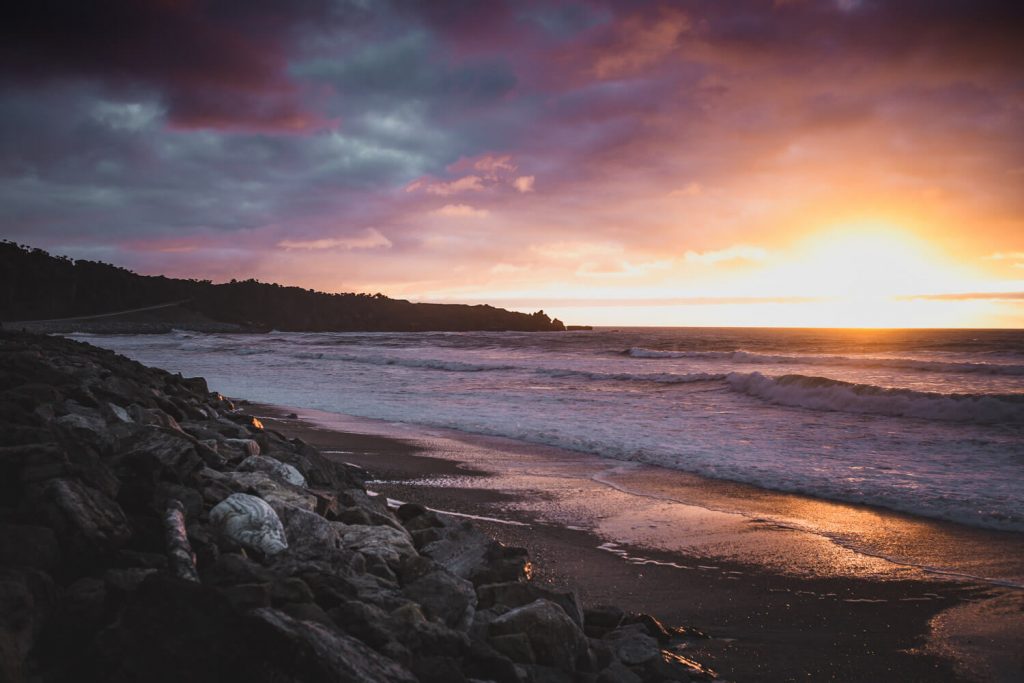
Day 5: Blue Lakes of New Zealand
Moving down South through the west coast is as easy as it is scenic. There are plenty of beautiful spots to stop by and snap a shot. The next pin on our New Zealand travel route was Hokitika George, a beautiful baby-blue water creek.
The Blue Lakes, also known as the Hokitika Lakes, are a series of glistening blue-green lakes located in the Hokitika Gorge. The lakes are fed by the Hokitika River and are surrounded by lush native forests, making for a picturesque setting. You can take a hike around the lakes and take in the natural beauty of the area. After that, you can visit the town of Hokitika, a small town known for its arts and crafts, particularly jade and greenstone jewelry. You can take a stroll along the main street and browse through the local shops and art galleries. You also can visit the Hokitika Heritage and cultural center to learn about the history of the town and the region.
To be frank, I was skeptical of the pictures I saw on the internet but I immediately gasped with amazement when we approached the waters of Hakitoka George. Yep, it is better than pictures. The baby-blue color is real.
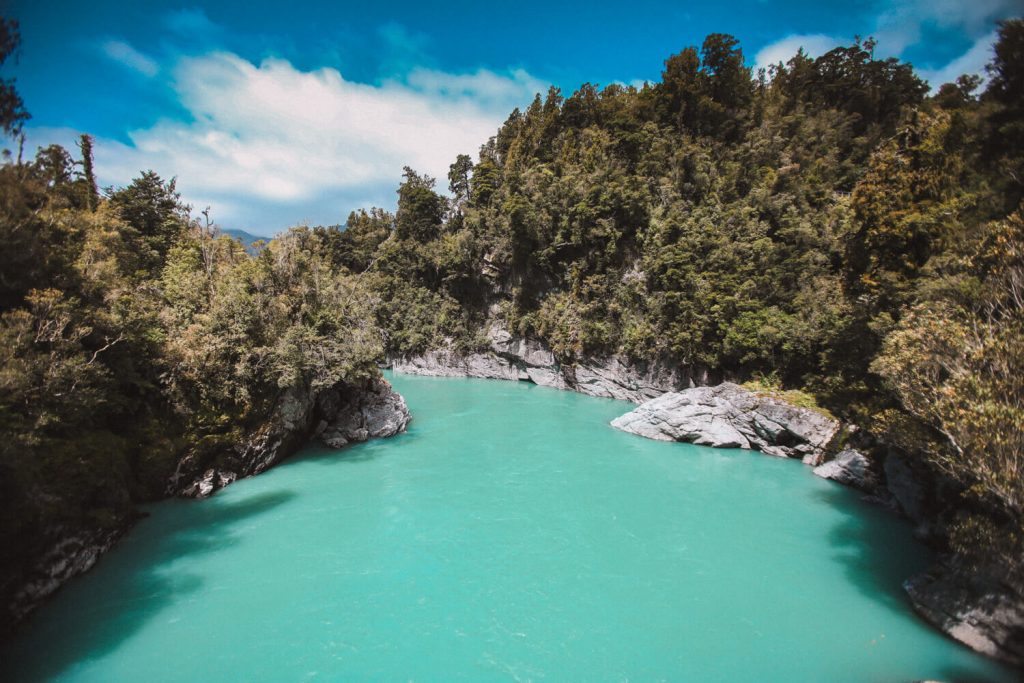
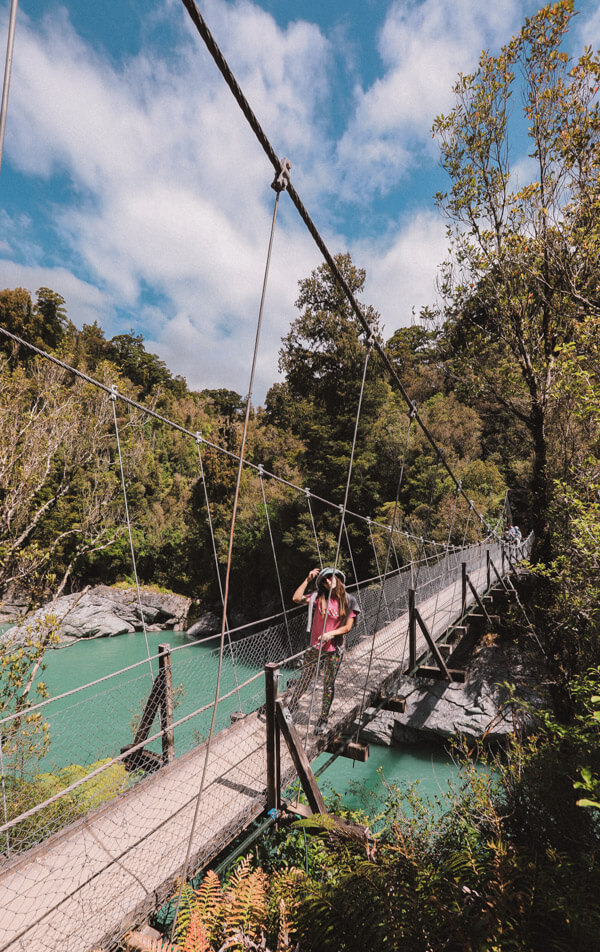
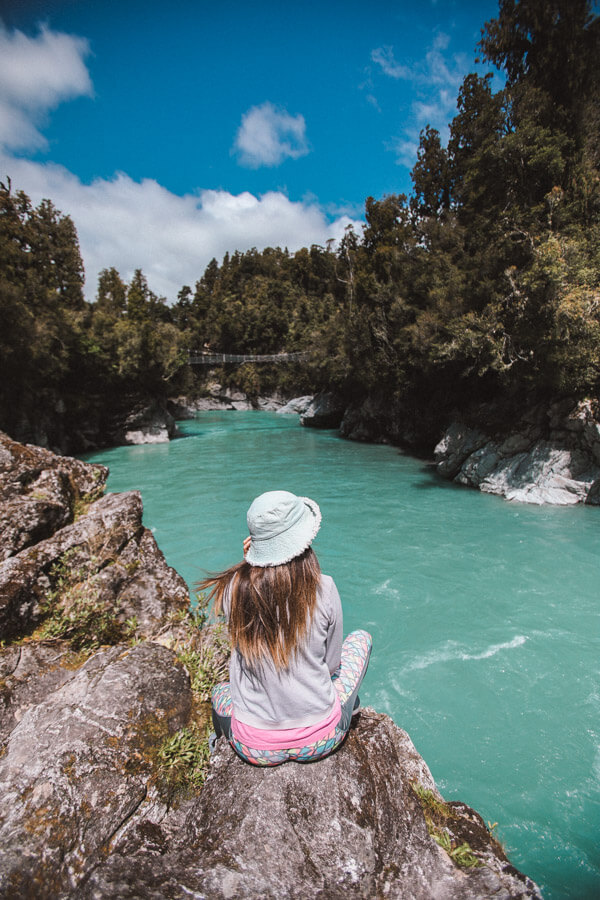
Day 6: Franz Josef Glacier
On this day we finally reached Glacier city which is way more lively than any other spot on the west coast. This, however, is mainly due to tourists who come here to see the glaciers and take scenic helicopter flights.
The choices for adventure here are plenty: you can either take a guided full-package glacier tour including helicopter pickup and drop-off with hours of glacier hiking (or even overnighting), have a short scenic flight above the glaciers, or take a self-guided free walk towards the Franz Josef glacier.
The walk is easy and takes 1-1.5 hours. You can’t get close to the glacier because it melted a lot in the last 10 years and the area is now dangerous due to rock falls.
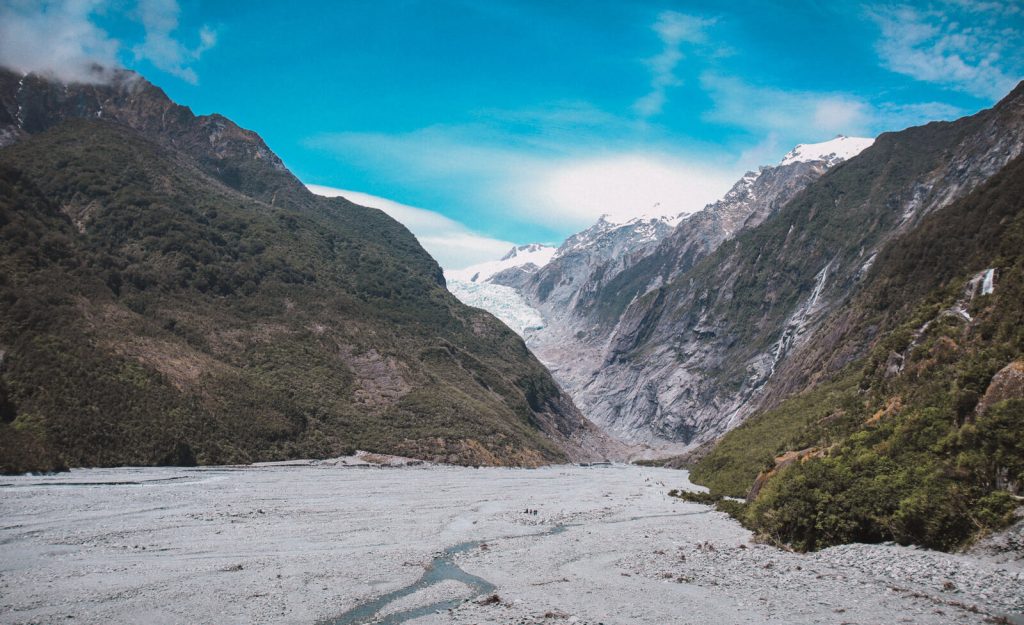
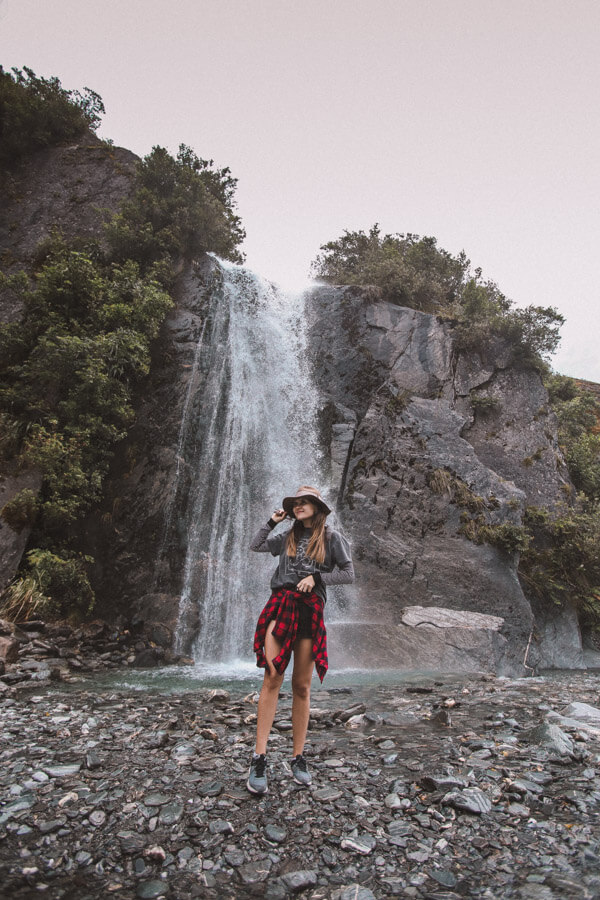
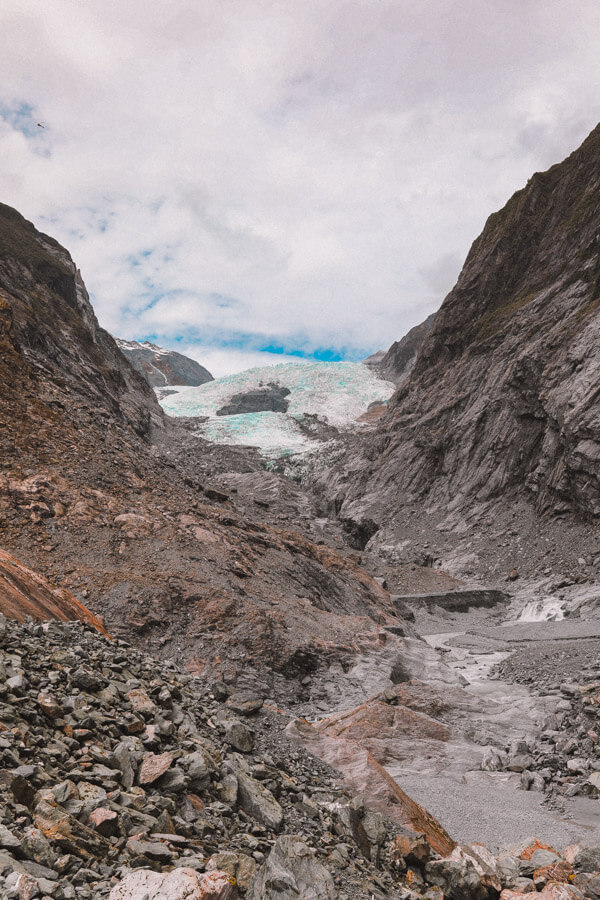
You can relax after your icy adventure by soaking in hot pools. The entrance fee is $29 per adult. The facility has three pools with different temperatures of 36, 38, and 40 degrees. After a cold day, we were happy to soak in the pools in the evening.
Day 7: Fox Glacier
A short 30-minute ride away is another wonder of New Zealand a twin of Frank Josef – Fox Glacier. The Fox Glacier is located in the same national park and offers a different perspective of the glaciers.
This time, instead of hiking towards the glacier, we took a circuit walk around Matheson Lake. The lake is known for its beautiful reflections of Mt Cook and Mt Tasman, similar to the European lake of Lago do Braies in Italy. For the best views, try to visit at dawn or dusk when the water is calm. The slightest wind disturbances can ruin the mirror effect. The walk is an easy 1.5 stroll.
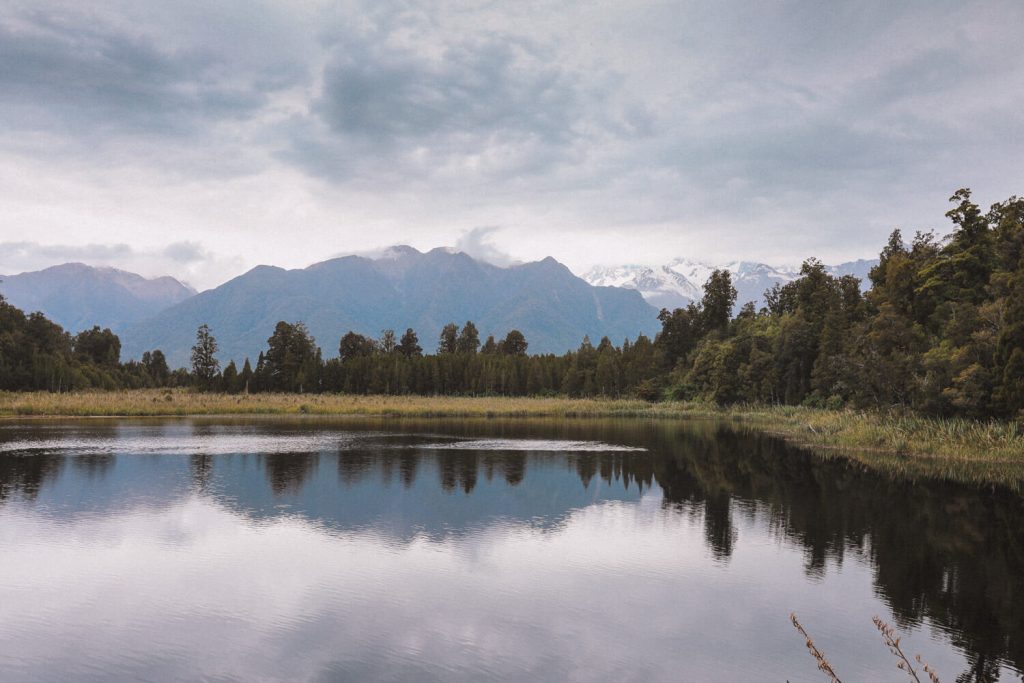
Day 8: Drive Through Blue Pools to Lake Wānaka
Leave the glaciers behind and drive through Haast Pass, a scenic route that takes you through lush rainforests and along the Haast River. Stop at the Blue Pools and Thunder Creek Falls for a refreshing swim and a picnic. The walk to the pools is a short 20-minute hike and a good stretch for your legs on this long day of driving.
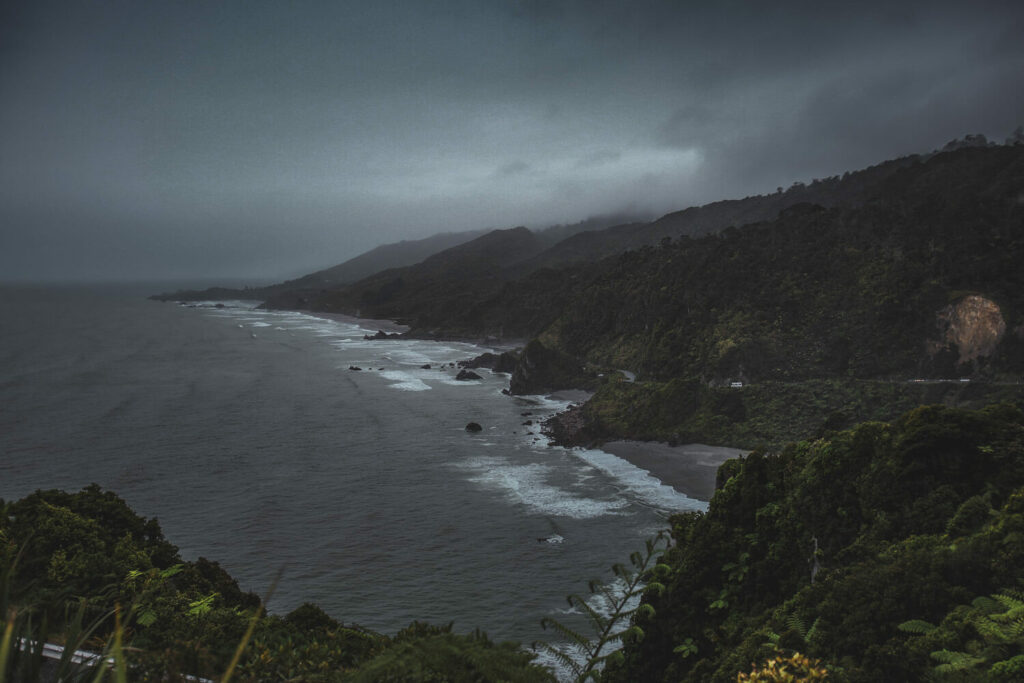
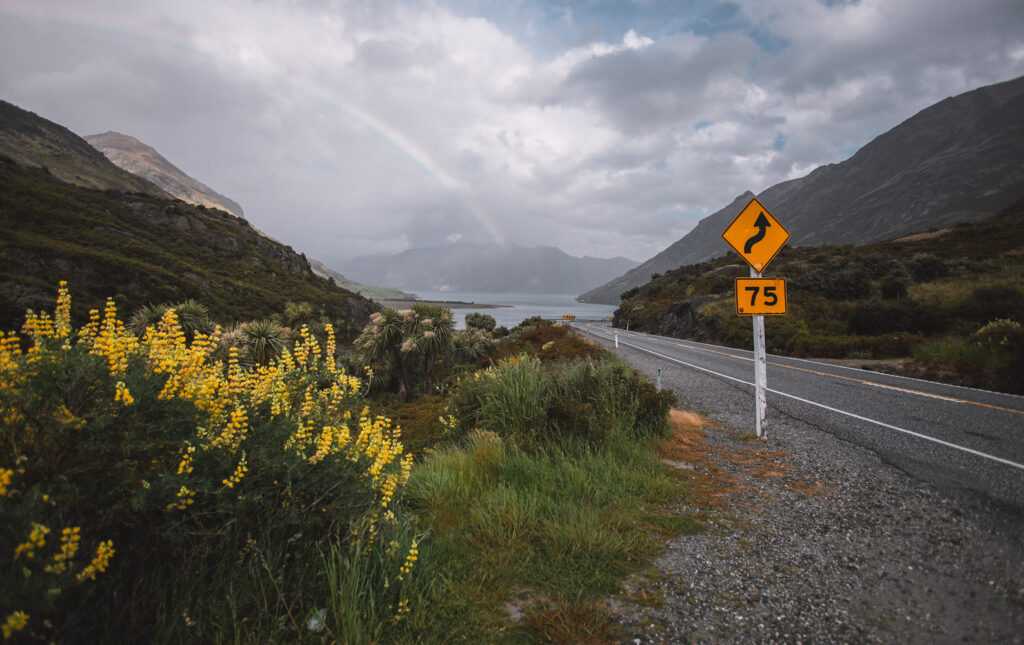
A long drive led us all the way to Wānaka lake, which greeted us with sunshine peeking through the thick cloud carpet. Wānaka is a great getaway spot for water activities, skydiving, hiking, you name it! It is also one of a few cities on our route, so it was a good spot for getting petrol, shopping for groceries, and getting WiFi. It was getting close to the sunset and we ended up stopping at the Neck between Wānaka and Hawea lakes and taking a bunch of beautiful pictures. We camped at Lake Hawea Freedom Campsite with nice facilities and an amazing view of the lake.
Day 9: Lake Pukaki – Another Turquoise Gem
Only a two-hour drive away is Lake Pukaki, which exceeded all the expectations I didn’t have. The water is so incredibly bright blue, that it made me question my own vision. Could it be that my sunglasses distort it? No, it’s real. Not far from it, glorious Mt. Cook is visible among other mountain peaks.
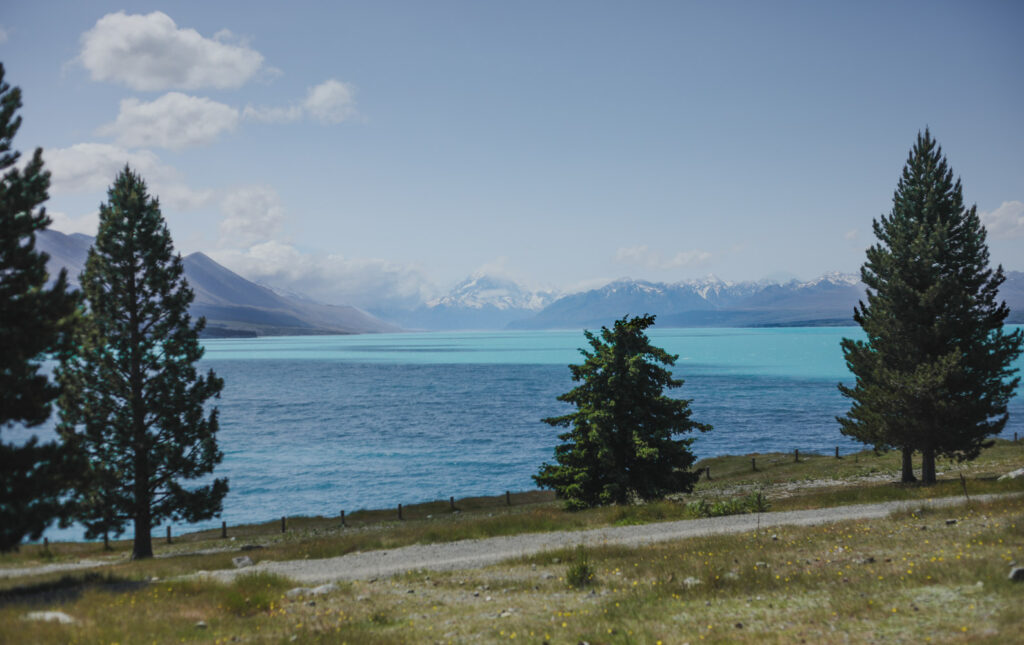
If you have the time, make a stop at Lake Ruataniwha. It is far less known which makes it a special little treat. Lake Ruataniwha has this unusual green and see-through water. You can have this lake all to yourself since it is far less popular.
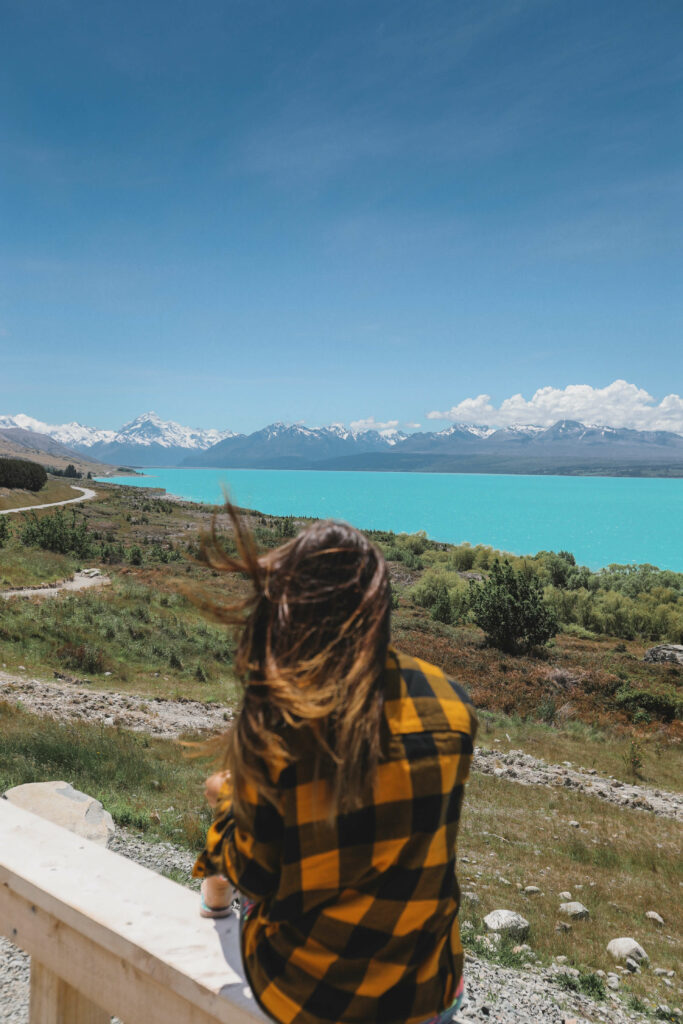
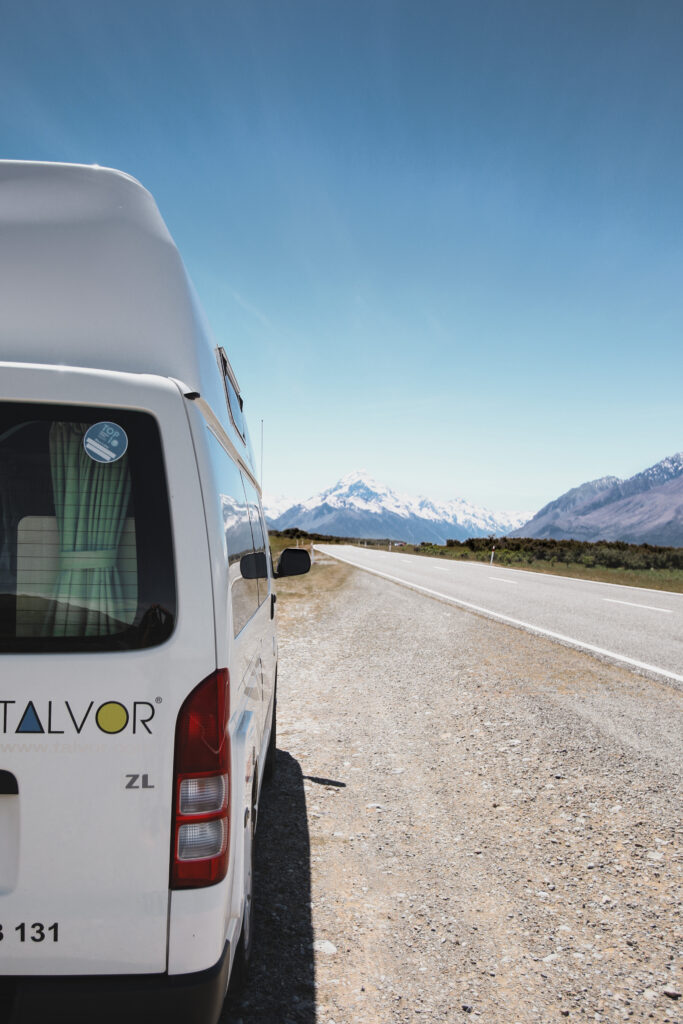
Lake Pukaki, on the other hand, is a large glacial lake known for its stunning turquoise blue waters and the surrounding mountain ranges, which offer breathtaking views. The lake is a popular spot for camping, fishing, and boating. Visitors can also take a tour of the hydroelectric power station at the lake’s outlet, which provides insight into the region’s energy production.
Day 10: Mt Cook National Park
The wow effect starts during the drive approaching the mountain range as it grows bigger and bigger in front of your eyes and all you want to do is stop and take pictures. So that’s what we did!
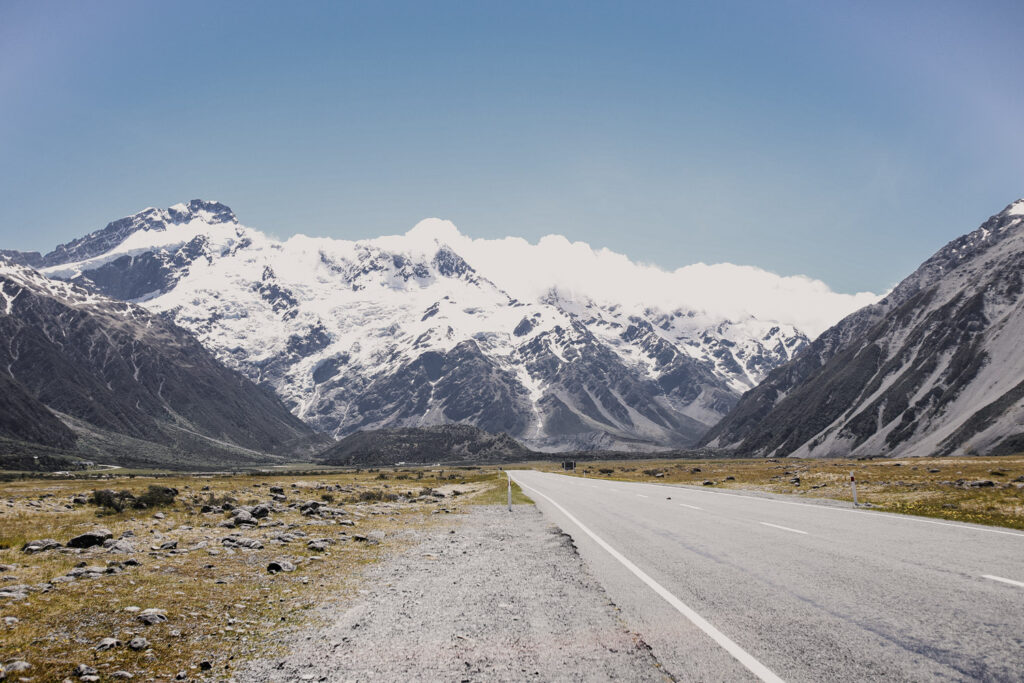
The road from Pukaki lake is just 40 minutes of pretty easy drive. I was expecting windy mountain roads and complexity but the road was straight all the way, following the toxic colors of lake Pukaki half of the way.
What you find arriving in Mt Cook National Park is a small village with a few cafes (we found 2 cafes and 1 restaurant), a visitor center, and a shelter where tired travelers can take a break, use the kitchen, bathroom, and even take a shower for free.
There is a number of hikes one can attempt in Mt Cook National Park. I went for a 3-hour return trail to Hooker lake. This is an easy trail that passes through 3 hanging bridges and Mueller lake as a bonus. The Hooker lake is where the Glacier ends here you can still see pieces of ice floating about. But the best thing about it is the nice view towards Mt Cook that sits just right above the glacier.
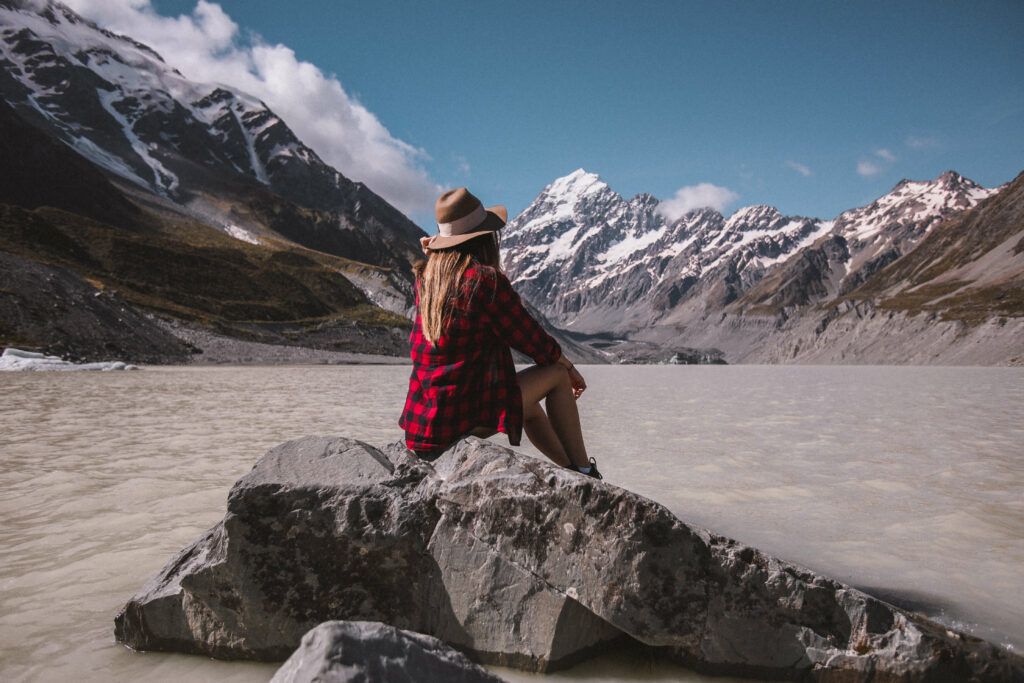
The most exciting adventure of our stay happened at dusk when all visitors dispersed and we were the only ones going on a hiking trail in a nearby Tasman valley. An easy 10-minute trip to the Blue lakes brings instant reward! The lakes were more green than the name suggested, but they were 3 tiny mountain lakes perfectly still upon the sunset. You could photograph the reflection of the mountain drop in it too.
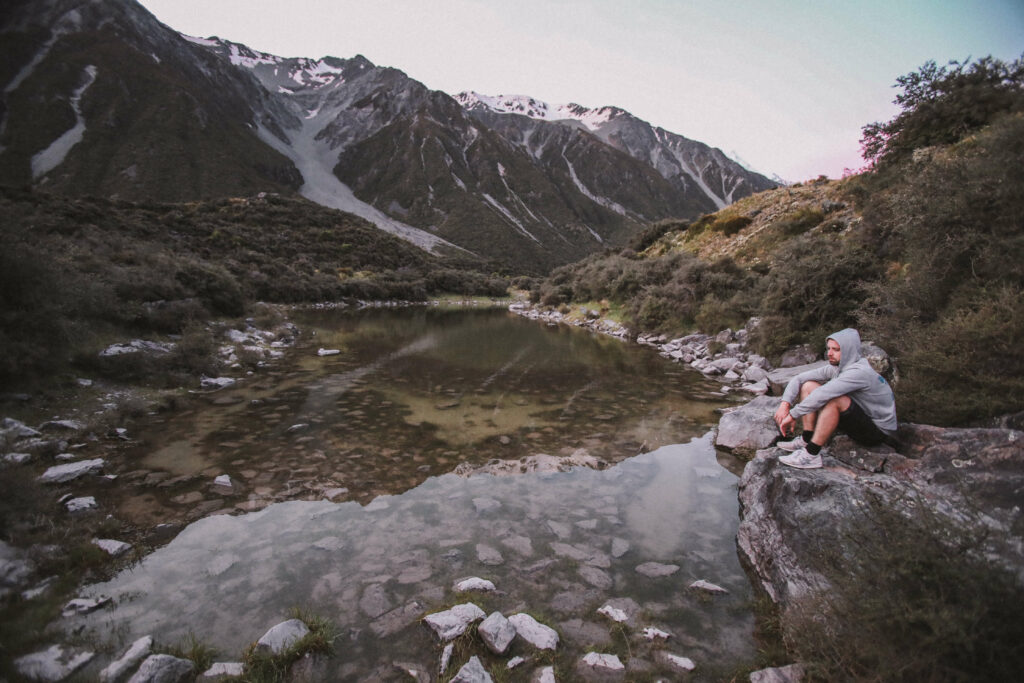
Being adventurous souls that we are, we didn’t stop there but climbed up the hill to get a better sunset view and we weren’t disappointed. The Tasman lake with its same-named glacier appeared in front of our eyes. The sunset rays looked incredibly good on it and made the water almost glow blue in the twilight. This little climb definitely made my day.
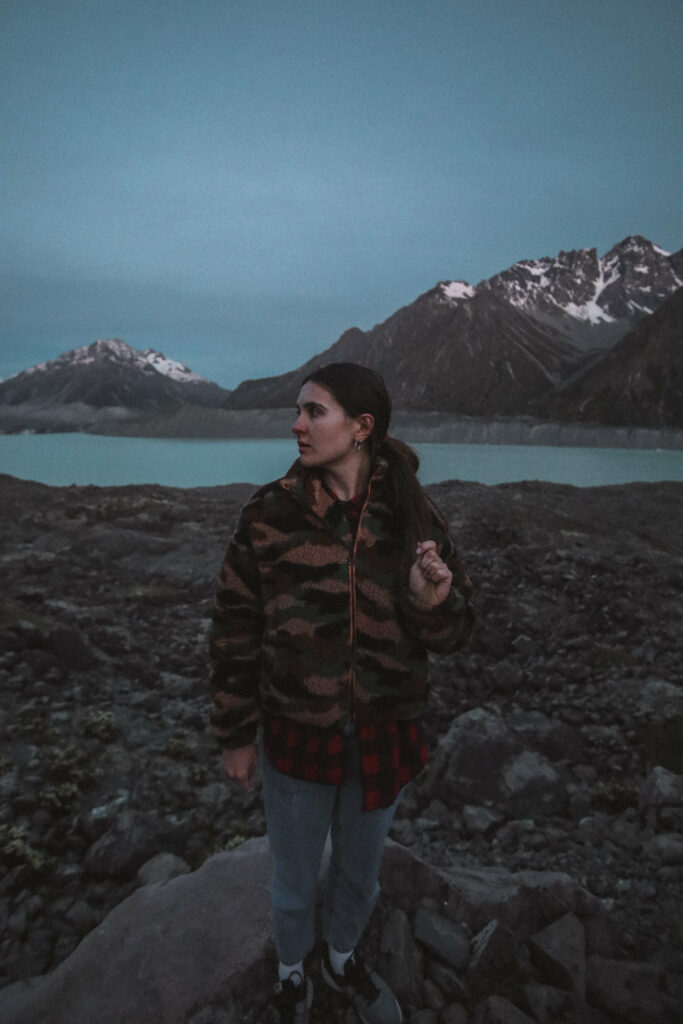
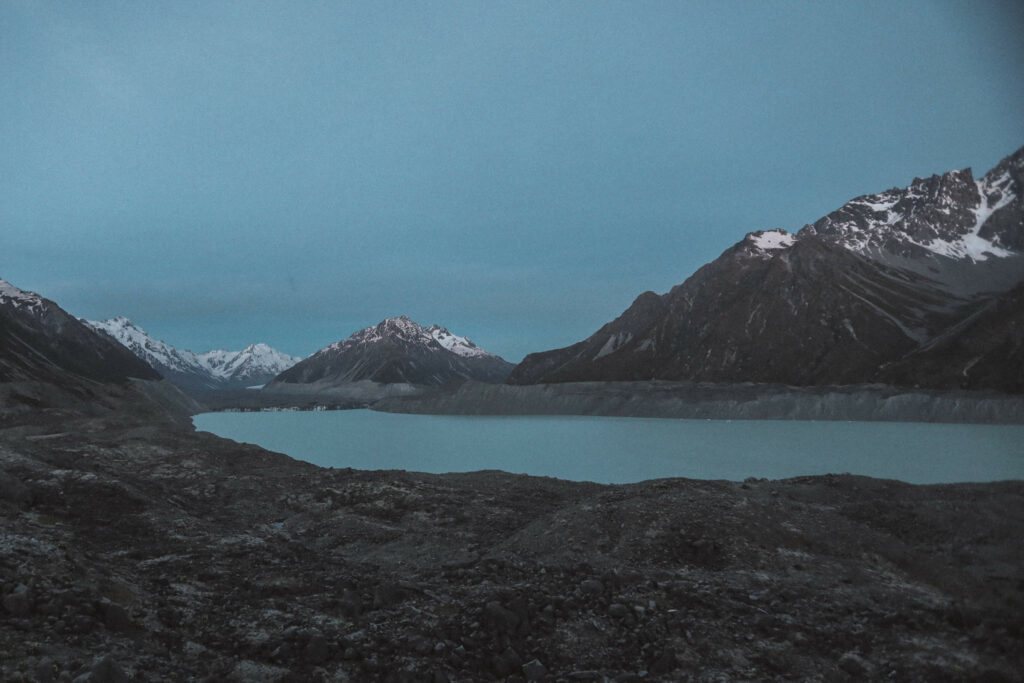
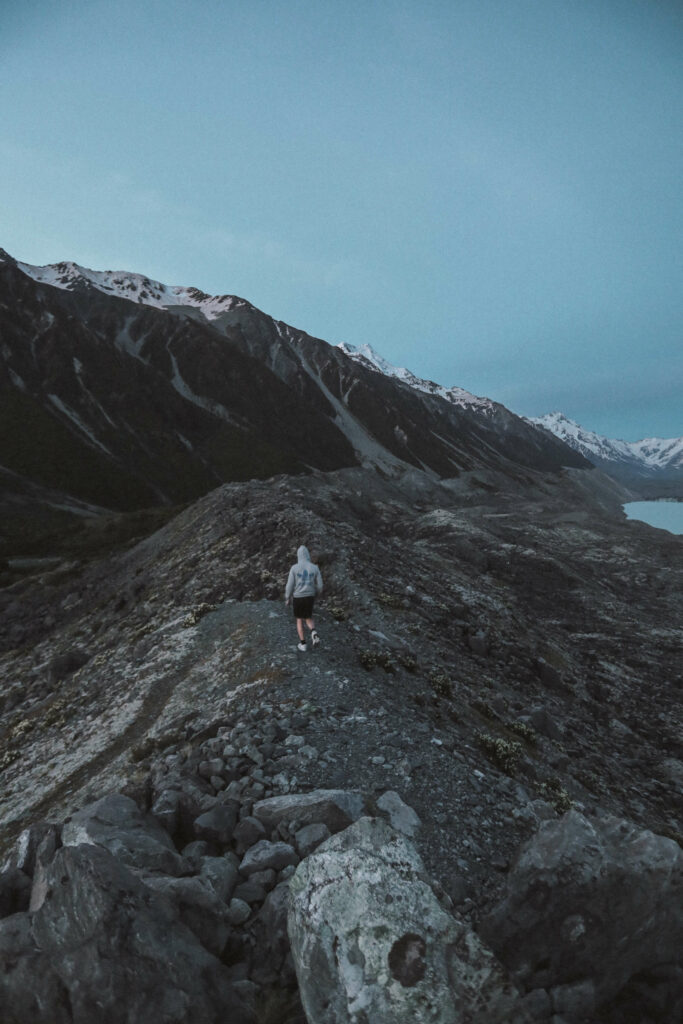
Day 11: Lake Tekapo
All I knew about New Zealand landscapes before my trip was lake Tekapo. But it still ended up looking much better in life than pictures can tell.
That is all because most people photograph the same location with flowers and while it is a nice spot, honestly, flowers are everywhere in Tekapo!
The town is quite small but charming, there are cafes and supermarkets here. The highlight is of course the lake itself with its unreal bright baby-blue color, the same as Pukaki.
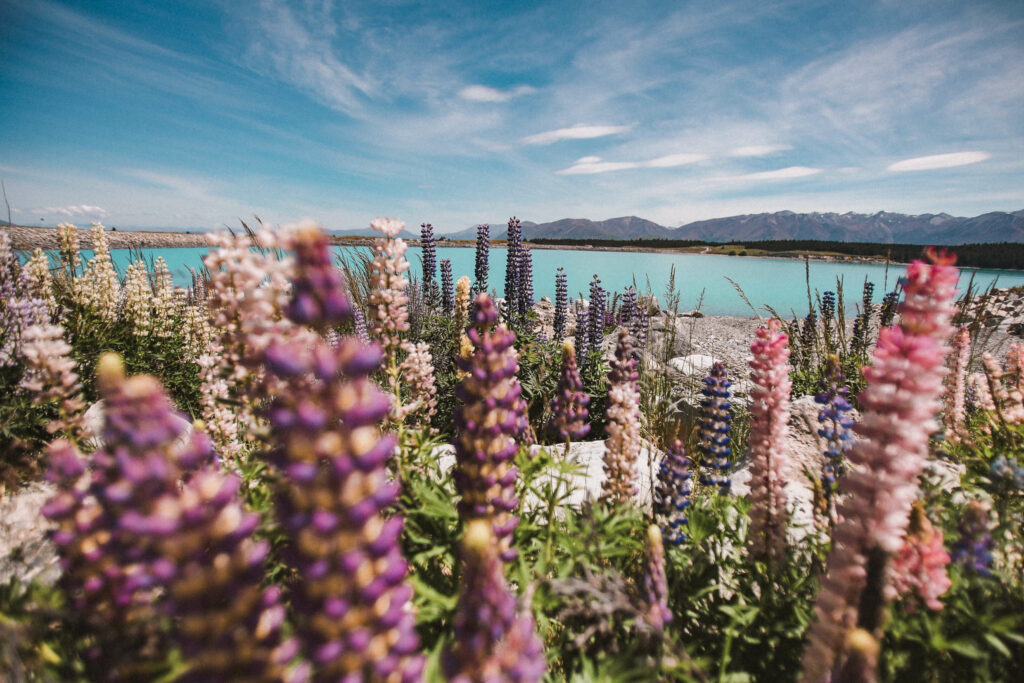
Of course, the signature card of Tekapo is lupin flowers that grow absolutely all around the lake in late spring. A sharp contrast to Rotorua with its thermal smells, lupins in Tekapo made the entire city smell like perfume.
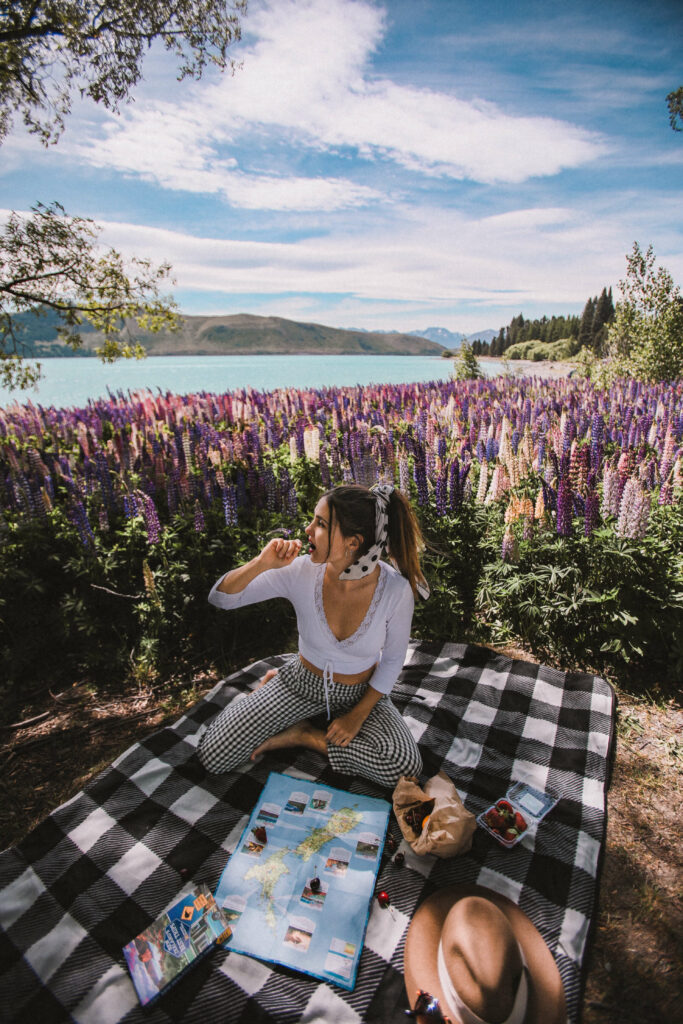
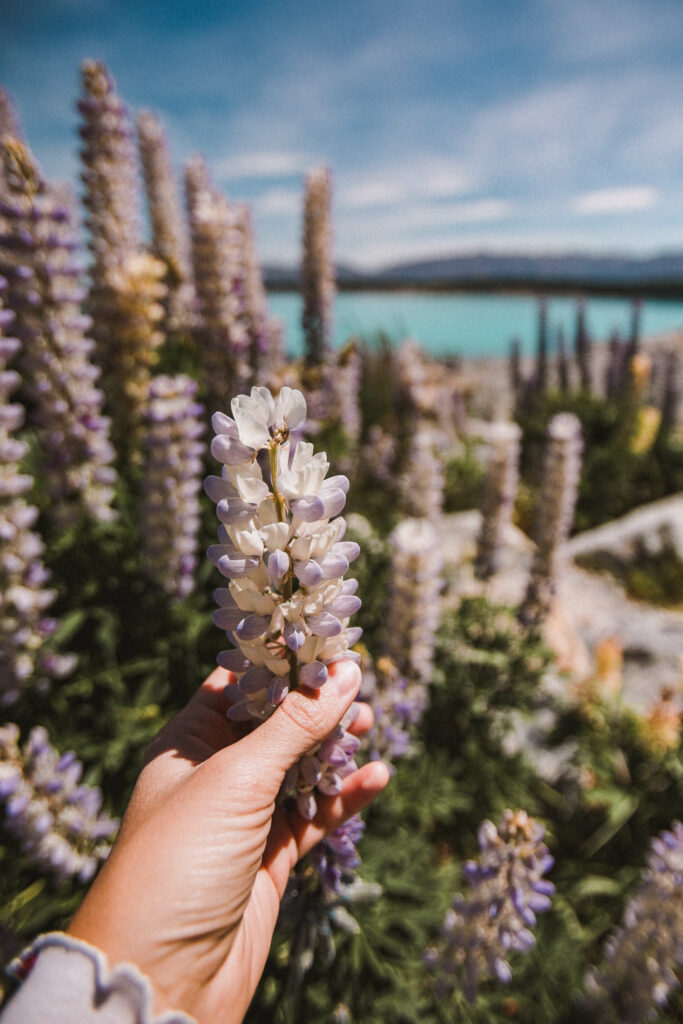
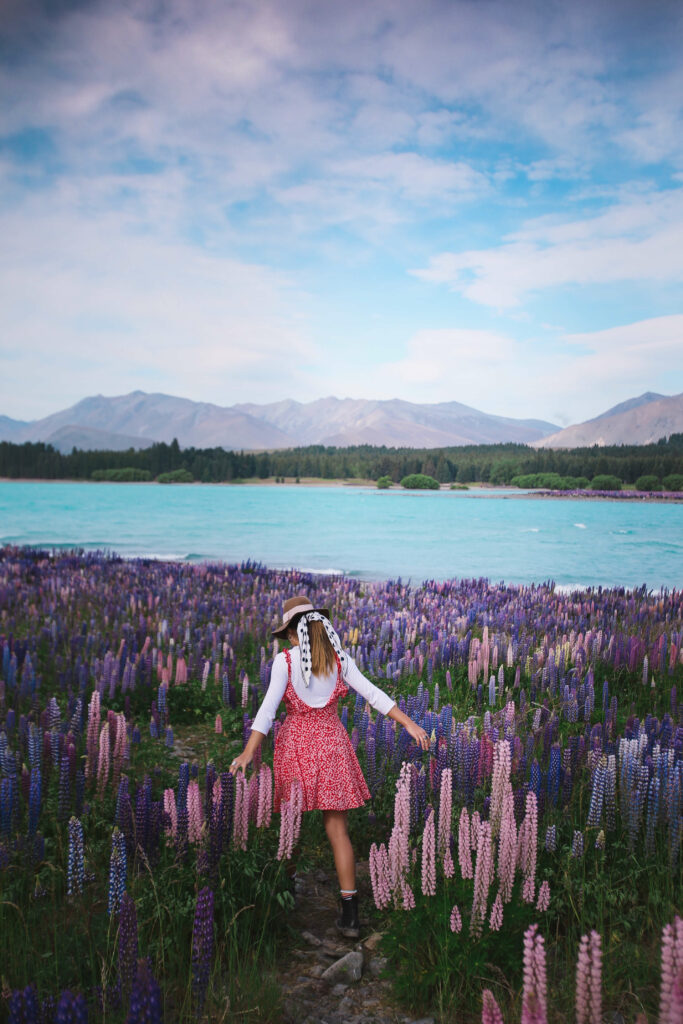
Among things to see in Lake Tekapo, is the Church of a Good Shepherd, a tiny rock church standing on the lake shore. I encourage you to go inside. No photography is allowed there, but just take a moment of peace and be present. Church of a Good Shepherd is the most photographed place in lake Tekapo especially for night photography. This is because Lake Tekapo is a perfect stop to gaze at the night sky. There is a number of star-gazing and night photography tours in the area, including the tour to the Mt John Observatory.
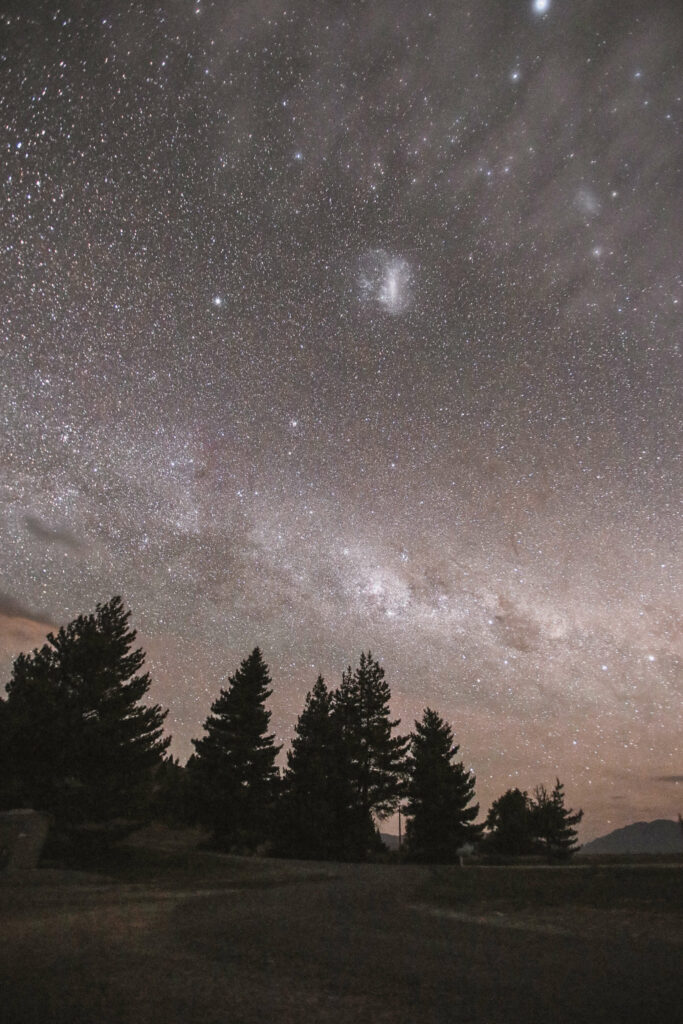
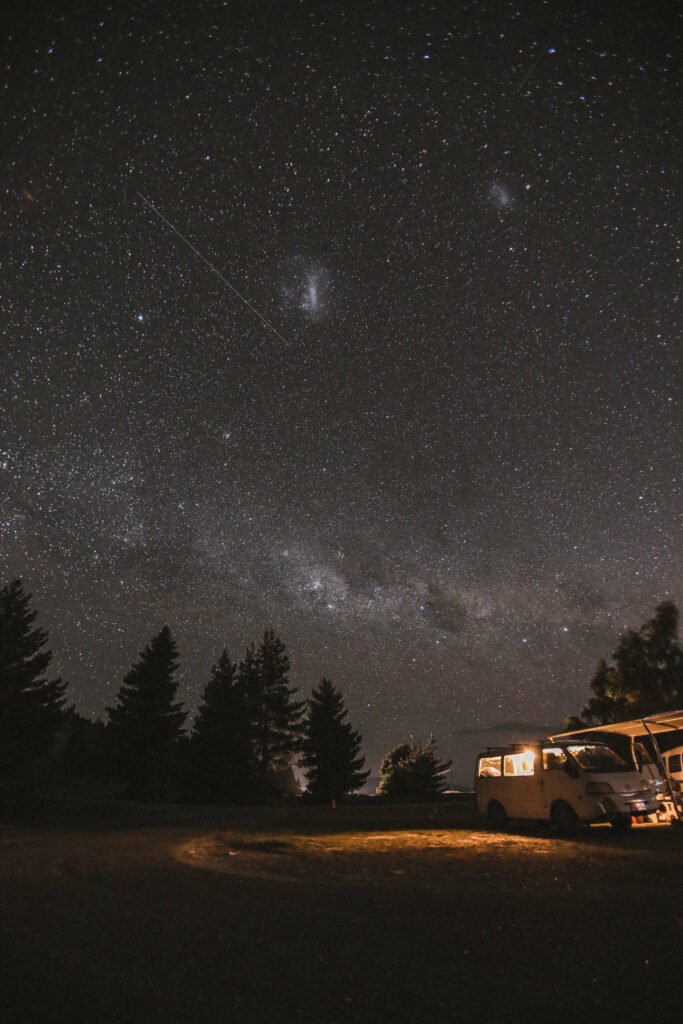
Day 12: Akaroa
Leaving Lake Tekapo, we started slowly heading towards Christchurch, the point of our departure and end of our 2 weeks in New Zealand adventure.
Akaroa is a small town located on the Banks Peninsula known for its stunning natural beauty, rich history, and French and British colonial heritage.
Apart from that, Akaroa is home to a large population of Hector’s dolphins, the world’s smallest and rarest marine dolphins, which can be observed in the wild. Therefore, it is a perfect spot to wind down and enjoy nature.
You might also enjoy reading “A Detailed Guide to Planning an East Coast Australia Road Trip”
Day 13: Christchurch
It’s time to head towards Christchurch – the last stop of our 2 weeks in New Zealand itinerary. We didn’t want to rush out of our new beloved spot by the water but it was time to return our hired campervan. Christchurch is the largest city in the South Island, which proved to be a very charming calm little town with the aspiration to be a cultural hub. The Anglican churches all around give it a little European feel and a little tram going around the city reminded me of San Francisco. It was easy to find good food and a good hotel – our stay at The Grange B&B added extra charm as well.
Overall, a nice spot to end two weeks adventure in New Zealand.
Day 14: Departure from Christchurch
It is time to say goodbye to your magical campervan road trip with 2 weeks in New Zealand itinerary, the land of kiwi.
Like It? Pin It!
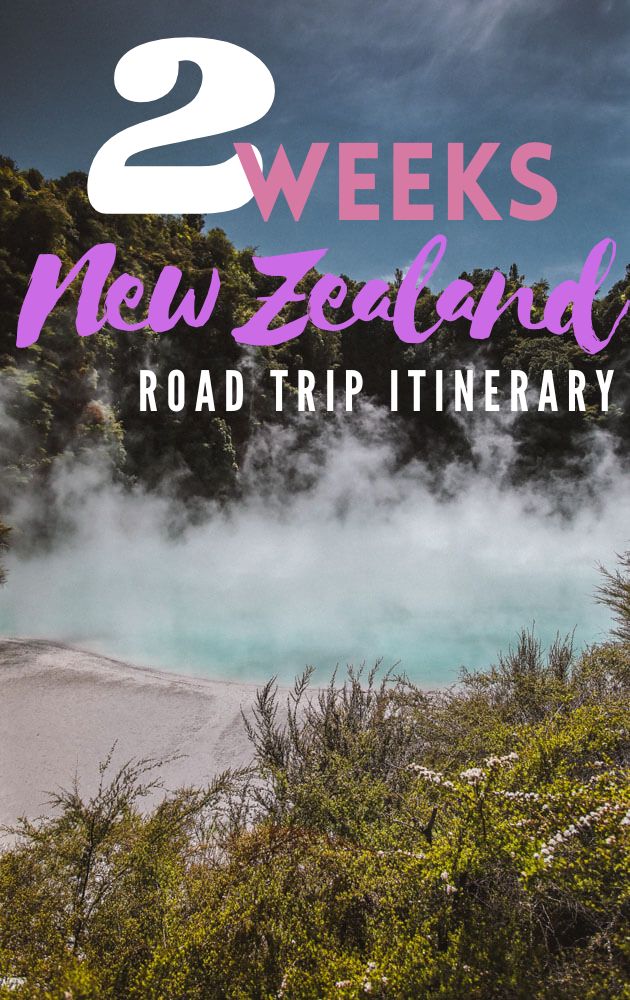
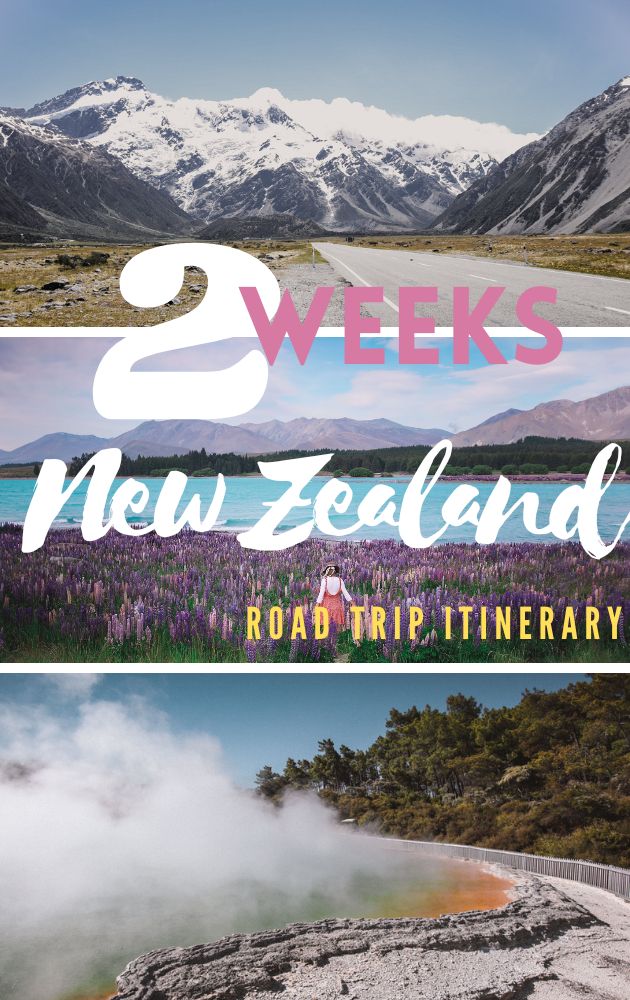
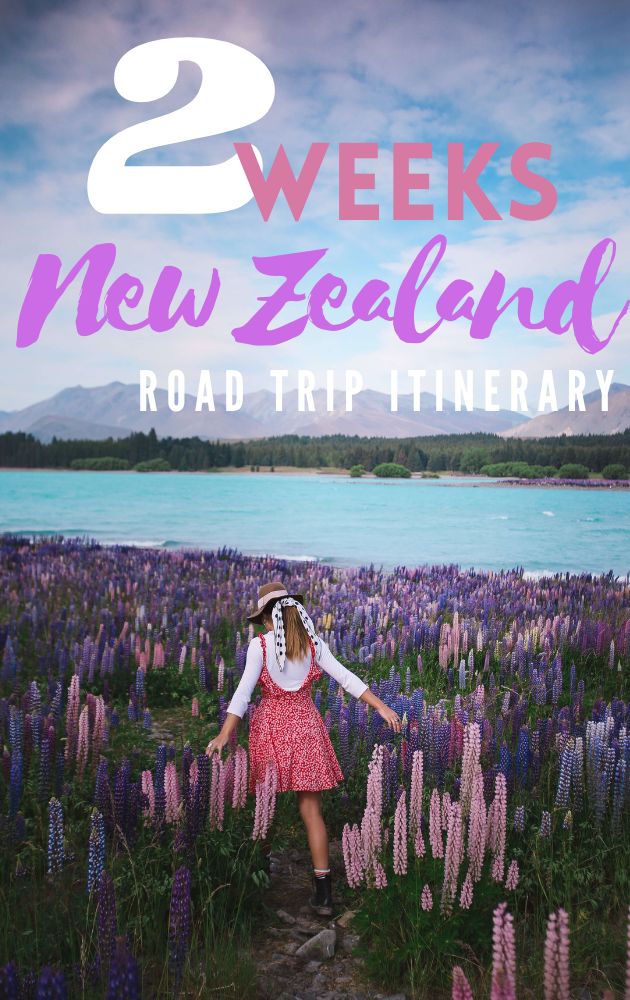
Source link




